Okay, ready to go again? We head out to Vietnam for two weeks on Wednesday.
As followers of this blog know, I generally start out with background on the country, stolen shamelessly from several sources. So, if you think you’ve detected some stylistic irregularities, some repetition and maybe even an inconsistency or two in what follows, chances are you’re right. this post may well be more background than you care to read, so brush up on your skimming techniques and, rest assured, it could have been a helluva lot longer. Future posts will be shorter and less dense.
Geography.
Vietnam occupies the eastern and southern part of the Indochinese peninsula in Southeast Asia, with the South China Sea along its entire coast. China is to the north and Laos and Cambodia are to the west. Long and narrow on a north-south axis, Vietnam is about twice the size of Arizona. The Mekong River delta lies in the south.
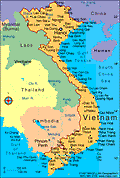
History.
Vietnam’s history is one of war, colonization and rebellion. Occupied by China no fewer than four times, the Vietnamese managed to fight off the invaders just as often. Even during the periods in history when Vietnam was independent, it was mostly a tributary state to China until the French colonization. Vietnam’s last emperors were the Nguyễn Dynasty, who ruled from their capital at Hue from 1802 to 1945, although France exploited the succession crisis after the fall of Tự Đức to de facto colonize Vietnam after 1884. Both the Chinese occupation and French colonization have left a lasting impact on Vietnamese culture, with Confucianism forming the basis of Vietnamese social etiquette, and the French leaving a lasting imprint on Vietnamese cuisine.
After a brief Japanese occupation in World War IIl, the Communist Viet Minh under the leadership of Hồ Chí Minh continued the insurgency against the French, with the last Emperor Bao Dai abdicating in 1945 and a proclamation of independence following soon after. The majority of French had left by 1945, but in 1946 they returned to continue the fight until their decisive defeat at Dien Bien Phu in 1954. The Geneva Conference partitioned the country into two at 17th parallel, with a Communist-led North supported by the Soviet Union, and Ngo Dinh Diem establishing a capitalist regime and declaring himself President of the Republic of Vietnam with the support of the United States in the South.
US economic and military aid to South Vietnam grew through the 1960s in an attempt to bolster the Southern Vietnam government, escalating into the dispatch of 500,000 American troops in 1966 and what became known as the l. What was supposed to be a quick and decisive action soon degenerated into a quagmire, and U.S. armed forces were withdrawn following a cease-fire agreement in 1973. Two years later, on April 30, 1975, a North Vietnamese tank drove into the South’s Presidential Palace in Ho Chi Minh City and the war ended. An estimated 3 million Vietnamese and over 55,000 Americans were killed.
The American Vietnamese war was only one of many that the Vietnamese have fought, but it was the most brutal in its history. Over two thirds of the current population was born after 1975. American tourists receive a particularly friendly welcome (we’ll see) in Vietnam, as many young Vietnamese are admirers of American culture.
In the post-1975 period, it was immediately apparent that the effectiveness of Communist Party (CPV) policies did not necessarily extend to the party’s peacetime nation-building plans. Having unified North and South politically, the CPV still had to integrate them socially and economically. In this task, CPV policy makers were confronted with the South’s resistance to communist transformation, as well as traditional animosities arising from cultural and historical differences between North and South. In the aftermath of the war, under Lê Duẩn’s administration, there were no mass executions of South Vietnamese who had collaborated with the U.S. or the Saigon government, confounding Western fears.
However, up to 300,000 South Vietnamese were sent to reeducation camps, where many endured torture, starvation, and disease while being forced to perform hard labor. The New Economic Zones program was implemented by the Vietnamese communist government after the Fall of Saigon. Between 1975 and 1980, more than 1 million northerners migrated to the south and central regions formerly under the Republic of Vietnam. This program, in turn, displaced around 750,000 to over 1 million Southerners from their homes and forcibly relocated them to uninhabited mountainous forested areas.
Compounding economic difficulties were new military challenges. In the late 1970s, Cambodia under the Khmer Rouge regime started harassing and raiding Vietnamese villages at the common border. To neutralize the threat, PAVN invaded Cambodia in 1978 and overran its capital of Phnom Penh, driving out the incumbent Khmer Rouge regime. In response, as an action to support the pro-Beijing Khmer Rouge regime, China increased its pressure on Vietnam, and sent troops into Northern Vietnam in 1979 to “punish” Vietnam. Relations between the two countries had been deteriorating for some time. Territorial disagreements along the border and in the South China Sea that had remained dormant during the Vietnam War were revived at the war’s end, and a postwar campaign engineered by Hanoi against the ethnic Chinese Hoa community elicited a strong protest from Beijing. China was displeased with Vietnam’s alliance with the Soviet Union. During its prolonged military occupation of Cambodia in 1979–89, Vietnam’s international isolation extended to relations with the United States. The United States, in addition to citing Vietnam’s minimal cooperation in accounting for Americans who were missing in action (MIAs) as an obstacle to normal relations, barred normal ties as long as Vietnamese troops occupied Cambodia. Washington also continued to enforce the trade embargo imposed on Hanoi at the conclusion of the war in 1975.
The harsh postwar crackdown on remnants of capitalism in the South led to the collapse of the economy during the 1980s. With the economy in shambles, the communist government altered its course and adopted consensus policies that bridged the divergent views of pragmatists and communist traditionalists.
Throughout the 1980s, Vietnam received nearly $3 billion a year in economic and military aid from the Soviet Union and conducted most of its trade with the USSR and other Comecon countries. In 1986, Nguyễn Văn Linh, who was elevated to CPV general secretary the following year, launched a campaign for political and economic renewal (Đổi Mới). His policies were characterized by political and economic experimentation that was similar to simultaneous reform agenda undertaken in the Soviet Union.
Reflecting the spirit of political compromise, Vietnam phased out its reeducation effort. The communist government stopped promoting agricultural and industrial cooperatives. Farmers were permitted to till private plots alongside state-owned land, and in 1990 the communist government passed a law encouraging the establishment of private businesses.
The U.S. lifted a Vietnamese trade embargo in Feb. 1994 that had been in place since U.S. involvement in the war. Full diplomatic relations were announced between the two countries in July 1995. In April 1997, a pact was signed with the U.S. concerning repayment of the $146 million wartime debt incurred by the South Vietnamese government, and the following year the nation began a drive to eliminate inefficient bureaucrats and streamline the approval process for direct foreign investment. Efforts of reform-minded officials toward political and economic change have been thwarted by Vietnam’s ruling Communist Party. In April 2001, however, the progressive Nong Duc Manh was appointed general secretary of the ruling Communist Party, succeeding Le Kha Phieu. Even with a reformer at the helm of the party, change has been slow and cautious.
In Nov. 2001, Vietnam’s national assembly approved a trade agreement that opened U.S. markets to Vietnam’s goods and services. Tariffs on Vietnam’s products dropped to about 4% from rates as high as 40%. Vietnam in return opened its state markets to foreign competition. The U.S. is Vietnam’s largest trading partner, buying about $7 billion in Vietnamese goods each year.
Regional tension over claims to islands and resources in the South China Sea flared in 2012. For centuries, China has declared sovereignty over the sea and many of its islands, including the Paracel and Spratly islands, which are rich in oil and gas reserves and fish. However, Vietnam has also laid claim to the Paracel and Spratly island chains, and the Philippines say the Spratly Islands are within their territorial claims. These disputes persist and are a source of tension in the area.
Politics.
Vietnam is a one party authoritarian state, with the General Secretary of the Communist Party of Vietnam as the supreme leader and president as the head of state, the prime minister as the head of government. The Vietnamese legislature is the unicameral National Assembly, from which the prime minister is selected. In practice, the president’s position is only ceremonial, with the prime minister wielding the most authority in government.
Economy
Economic reconstruction of the reunited country has proven difficult. After the failures of the state-run economy started to become apparent, the country launched a program of đổi mới (renovation), introducing elements of capitalism. The policy has proved highly successful, with Vietnam recording near 10% growth yearly (except for a brief interruption during the Asian economic crisis of 1997). The economy is much stronger than those of neighboring Cambodia and Laos. Like most Communist countries around the world, there is a fine balance between allowing foreign investors and opening up the market.
There used to be extreme restrictions on foreigners owning property or attempting to sell. However, a new property regulation announced on 1 July 2015 now allows foreigners to own and lease apartments in Vietnam. It is very difficult for foreigners to trade without negotiating ‘fees’. Business can be done via local partnerships with all the attendant risks.
Power and services is another issue. There are often rolling blackouts at times when there is not enough electricity. For this reason, many shops have portable generators.
According to government estimates Vietnam sees 7.9 million tourist arrivals each year. Vietnam has a return rate of just 5% compared to Thailand’s whopping 50%.
People
Most people in Vietnam are ethnic Vietnamese (Kinh), though there is a sizable ethnic Chinese community in Ho Chi Minh City, most of whom are descended from migrants from Guangdong province and are hence bilingual in Cantonese or other Chinese dialects and Vietnamese. There are also numerous other ethnic groups who occupy the mountainous parts of the country, such as the Hmong, Muong, and Dao people. There’s also a minority ethnic group in the lowlands near the border with Cambodia known as the Khmer Krom.
Buddhism, mostly of the Mahayana school, is the single largest religion in Vietnam, with over 80% of Vietnamese people identifying themselves as Buddhist and 40% practicing it. Christianity is the second largest religion at 11%, followed by the local Cao Dai religion. Islam, Hinduism and local religions also share small followings throughout the southern and central areas.
Culture
Due to its long history as a tributary state of China, as well as several periods of Chinese occupations, Vietnamese culture is strongly influenced by that of southern China, with Confucianism forming the basis of Vietnamese social etiquette. The Vietnamese language also contains many loan words from Chinese, though the two languages are unrelated. Buddhism remains the single largest religion in Vietnam. As in China, but unlike its Southeast Asian neighbors, the dominant school of Buddhism in Vietnam is the Mahayana School.
Nevertheless, Vietnamese culture remains distinct from Chinese culture as it has also absorbed cultural elements from neighboring Hindu civilizations such as the Champa and the Khmer empires. The French colonization also left a lasting impact on Vietnamese society, perhaps symbolized best by the Vietnamese fondness for baguettes and coffee. Southern and Central Vietnam, especially along the coast, have a much stronger Western influence, as compared to the North.
The division of Vietnam during what is locally called the American War has also resulted in cultural differences between northern and southern Vietnam that can been seen today. To this day, northern Vietnamese have a tendency to be more ideological, while southern Vietnamese tend to be more business-minded.
June 4. Breakfast in the room at 3:30 AM. Short trip to airport and check in go smoothly, and Carol and I are escorted into the comfortable business class lounge (the Lewises had been unable to upgrade on this leg) to await our 6:15 flight of almost seven hours from Jakarta to Tokyo.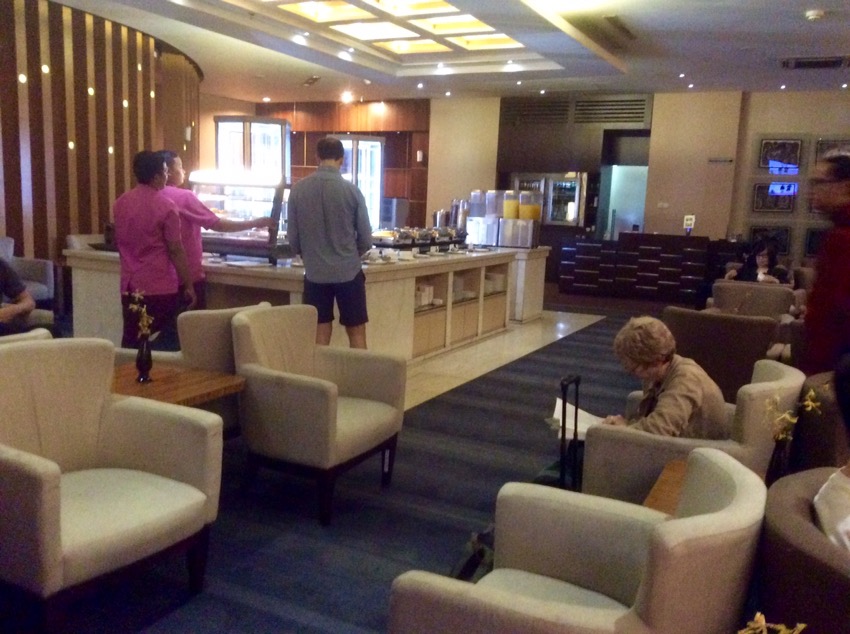 We spend an hour in the business class lounge in Tokyo. Carol favors the sushi, and I the edamame. We spend an hour in the business class lounge in Tokyo. Carol favors the sushi, and I the edamame.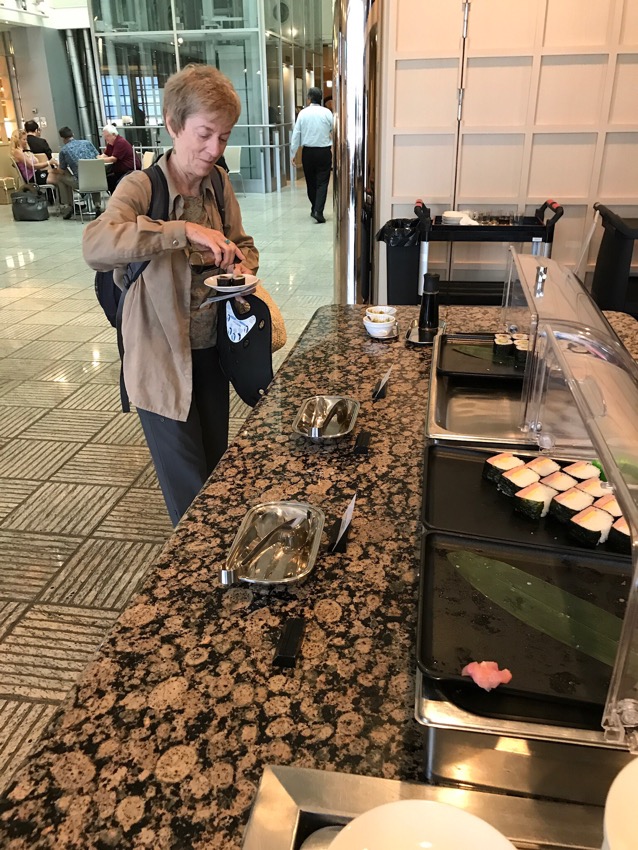 Lewises have upgraded to business class for the eleven hour flight to Chicago, but it turns out that Carol and I are in first class. Lewises have upgraded to business class for the eleven hour flight to Chicago, but it turns out that Carol and I are in first class.  I tell the Lewises that, if there’s another leg, Carol and I will be flying in the cockpit. I tell the Lewises that, if there’s another leg, Carol and I will be flying in the cockpit.
And now there’s time for some reflections on the trip.
Seems that every time I do one of these reflections, I’m struck by the fact that I’m not as young as I was in my last reflection. Alas, that’s true again. I don’t want to overstate that, because we’re still managing pretty well. Not as well as we would have ten (or five) years ago, but not too shabbily. The realization that we are not bionic makes me want to continue these trips as long as we can. As Carol and I have three more major trips planned within the next 12 months, I guess we’re not doing too badly on that score.
This was not an easy trip. The long flights and the heat and humidity were trying. There were many very early morning starts. The walks through the mud and leeches of Borneo and the ups and downs on many days (particularly difficult, for me, were the downs) are challenging. And one just plain gets a bit tired, you know. I don’t think I’ve ever appreciated air conditioning quite so much. And with Valerie’s bike accident and my fall in the forest, which could have proved a lot more serious than they turned out to be, we had a bit more excitement than we needed. Still, it’s not at all a close call as to whether the travails are worth it. Decidedly, they are.
The Lewises were excellent and game companions. Sharing experiences with them provided more perspectives on what we were seeing and doing, which is always valuable. And we laughed a lot together. We all four are experienced travelers and were ready to deal/roll with the blips one inevitably encounters on a trip like this.
In planning the trip, we struck a good balance, I think, between nature, in Borneo, and culture, in Indonesia. Both were fun, and interesting. For me, the nature portion was a complete shift from normal and so, in that sense, more engaging. Still, I would not have wanted more of it, largely because of the heat and humidity, but also because I found my frequent inability to spot birds frustrating. I needed larger, slower birds, I guess. That’s not to say that I did not see many beautiful birds. I did, because of some excellent guides, especially Azmil at Borneo Rainforest Lodge, who was truly outstanding.
I did not feel as immersed in the culture in Indonesia as I have on some of our other trips. In part, that’s because we spent a relatively short time there and in part because much of that time was spent visiting monuments, rather than seeing people and the way they live. The latter is more interesting to me (and is reflected in the highlights of the trip, discussed below). In general there were fewer people out and about, because we were visiting in the month-long Ramadan fast period. (This also meant that we were unable to see puppet performances, because there are none during this period.)
Photography is a significant element of travel for me, and this was not a great photography trip for several reasons. First, I like to photograph people, rather than animals or structures. There were only a few days in Indonesia that afforded the opportunity to photograph people, and those were certainly the best photography days for me. Second, I did not have the right equipment–long lenses and tripods–necessary to photograph birds and animals. Michael had the right equipment and his bird and animal photographs are far superior to mine. Unfortunately, I can’t attribute the entire difference to equipment, because his people photos are better than mine, too. While I won’t know what I captured until after I get home and look at them (I pick the blog photos in a rather random fashion from viewing tiny images), I think I may well like the abstract photos from our night drive the best.
I have made a conscious decision as to photographic equipment and photography, though, and I remain very comfortable with that decision. Michael probably had fifty pounds of equipment (without exaggeration). For me, carrying anything like that is simply not worth the better photos I might be able to take and would detract materially from my enjoyment of the experience. So I’m content with the level I can achieve with the equipment I can easily carry. I’m not as into the technique or technology or detail as Michael.
Now that I think of it, something similar may apply to my approach to birding. I am not as into the identification and detailed knowledge as the Lewises, or Carol. One might say I’m consistently lazy. So birding may not be the best type of activity for a “big picture” guy.
Whenever Carol and I travel, we make separate lists of our ten best/favorite aspects of the trip. Generally, we have a high level of agreement on those items. We let the Lewises in on our game this time.
Here are my ten (not necessarily in exact order), with a bit of commentary.
1. The canopy walk. Being among the trees and birds (even if I had difficulty finding them) was magical. A true immersion in nature on its own level and terms.
2. Seeing orangutans in the wild. This experience was closest to the African safari experiences that Carol and I have loved so much. Finding and observing orangutans swinging high up in the trees was thrilling.
3. Having meals in our private open pavilion by the river served by our charming butler, Jariah. I’m cheating a bit here, combining two elements in one. First the perfect serenity of sitting by the river with the forest looming on the opposite bank. And, second, Jariah, who was completely delightful and enhanced our overall experience at the lodge greatly.
4. Birding by boat on the river at the Kinabatangan Wildlife Sanctuary. Birds were easier to spot from the boat, and cruising down the river added great interest to the experience.
5. Eka. She was a delightful, knowledgeable guide who gave our experiences in Indonesia a face. Eka is a great example of how important a guide is to a travel experience. And we especially appreciated her because we were unable to understand the guide she replaced and had to request that he be dismissed.
6. The horse and buggy ride through the villages near the Amanjiwo. The scenery, the mode of transportation and the opportunity to see local people at work combined for a memorable morning.
7. Borobudur. This is an extremely impressive architectural and archeological monument, and the chance to see it at sunset (even though there was no sunset) when very few people were permitted to be there was especially excellent.
8. Meditating at Mendut Monastery. Spending an hour in near darkness in silence, except for the chanting of the three monks who were with us, was a unique and special experience.
9. Going to the OHD Museum to see the collection of modern art amassed by Dr. Lei Hong Djien. The collection itself, the way it was curated to show artists’ development over a 25-year period and meeting and talking with Dr. Djien all contributed to an unusual art experience.
10. Frogs. Clearly, what made this special and the reason it made my top ten list, was our meeting with Bob Inger, the 95-year old Bornean frog expert and Curator Emeritus at The Field Museum in Chicago.
There were certainly other experiences that could have made this list, as well.
Travel arrangements, on the whole, went quite smoothly. The only notable exception was an unsatisfactory guide for our first day in Indonesia. To balance that out, we had two outstanding guides, Azmil and EKA. Our accommodations ranged from places with great character–the Borneo Rainforest Lodge and the Phoenix–to luxurious–the Amanjiwo. And the other accommodations were quite acceptable. Meals at the Amanjiwo were outstanding and those at the Borneo Rainforest Lodge were very good.
Once again, the opportunity to have this type of experience is amazing. One needs to have the time, the interest, the financial wherewithal and the health to enjoy it. We are so fortunate and grateful to have all four.
Thanks for following the blog, and for all your comments. Hope you can join us in Vietnam in October.
I’ll close with some photos taken from the plane that, for me, evoke something of the dream quality of the photos I took on our night game drive in Borneo.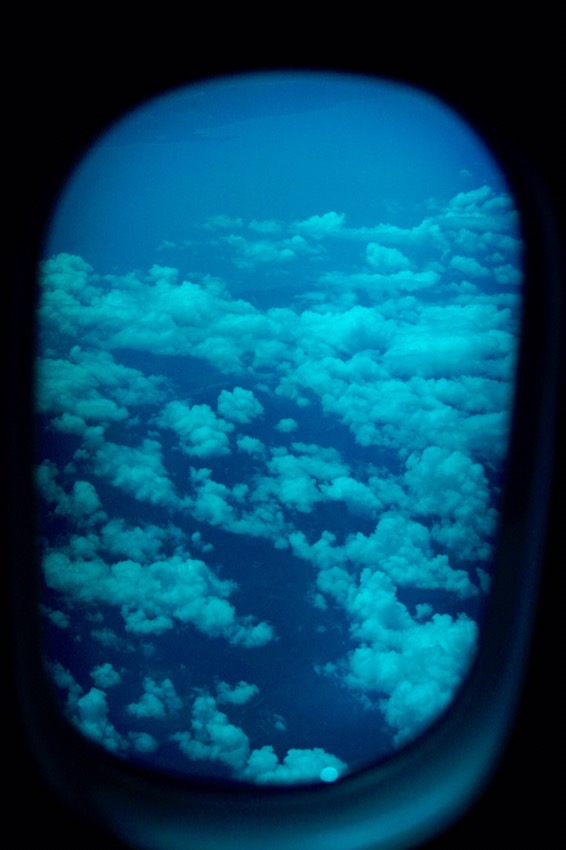 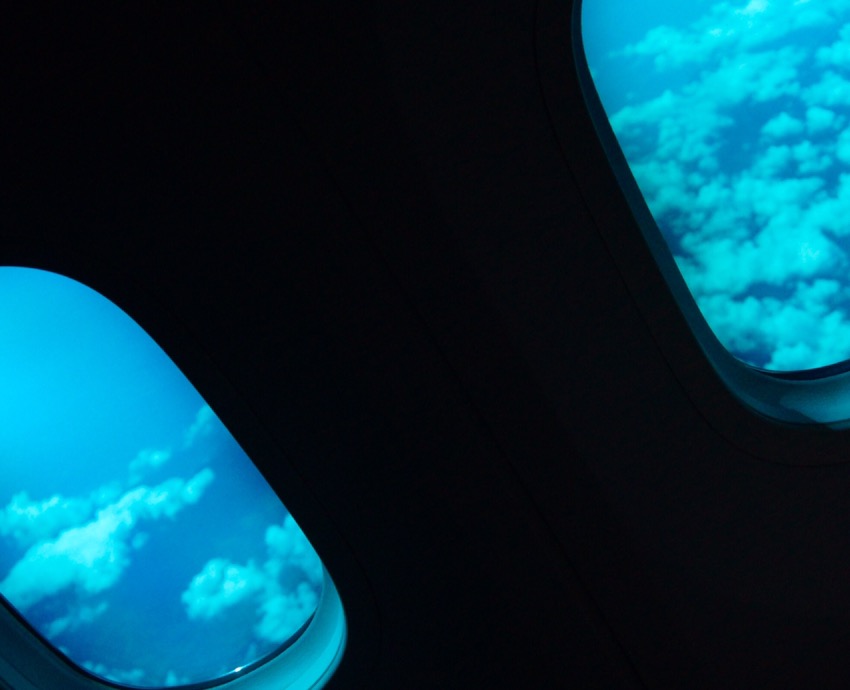 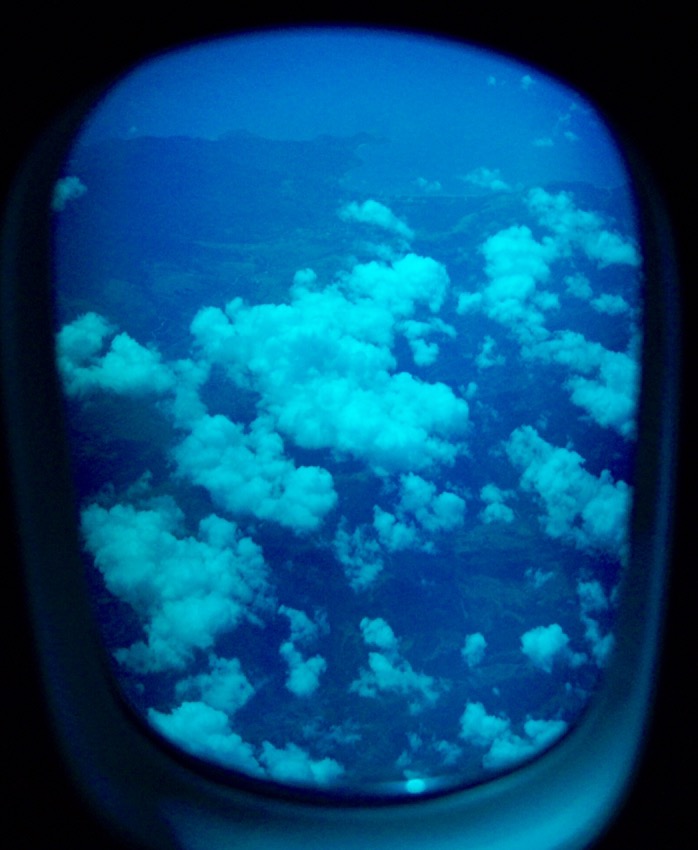 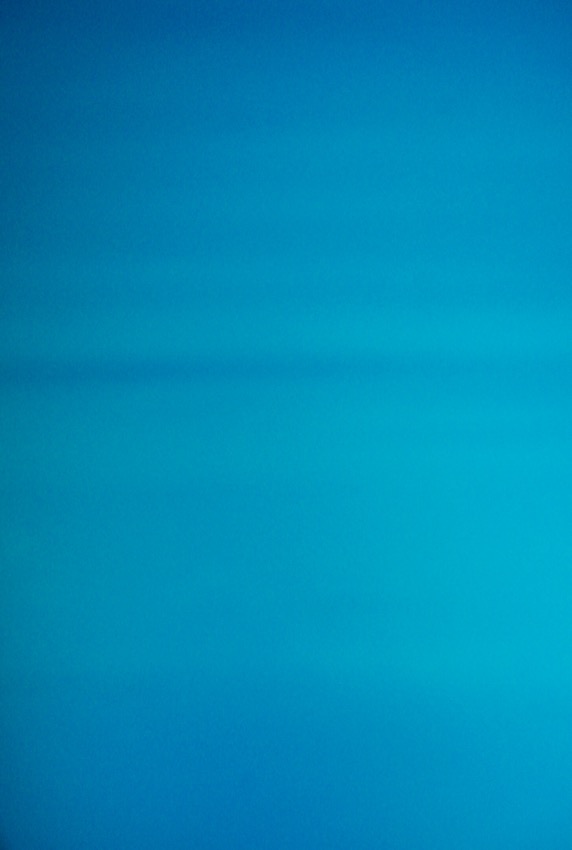 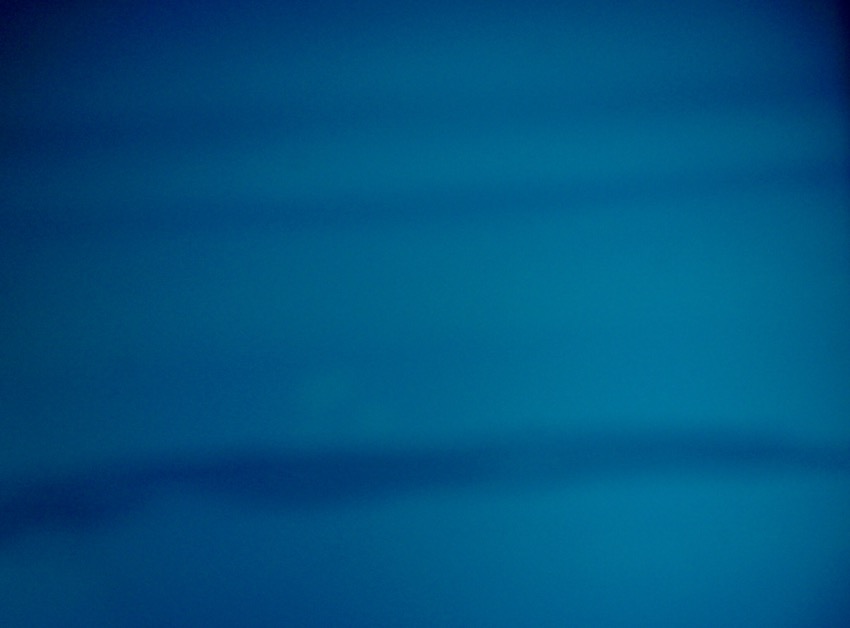  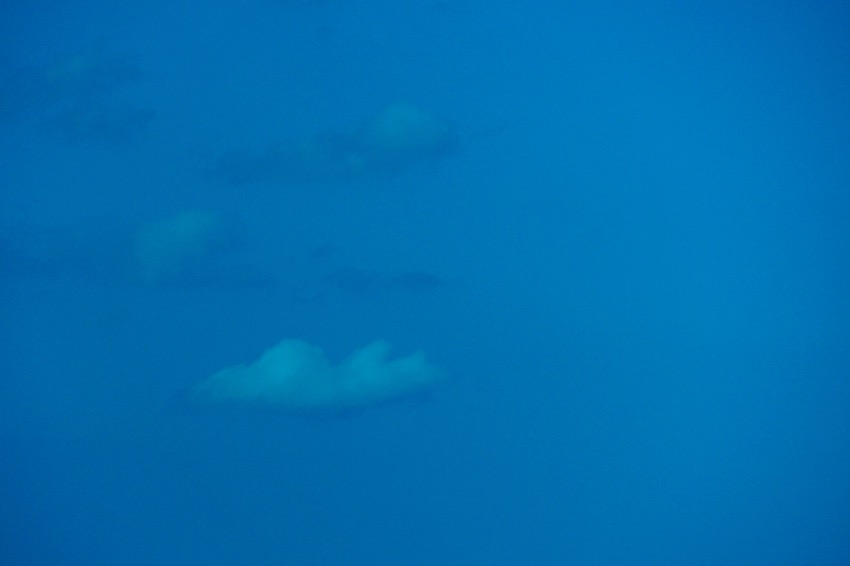
June 3. This morning I enjoy a leisurely breakfast on our patio and, after a quick breakfast, Carol goes off for a yoga class.
Eka picks us up at 9AM and we swing by the temple at Mendut, so the Lewises can see it. Meanwhile, Carol bargains for some purchases at the nearby market and, as usual, is pursued by multiple sellers seeking to make a deal. We drive on to visit a combined Hindu/Buddhist Temple at Plaosan We drive on to visit a combined Hindu/Buddhist Temple at Plaosan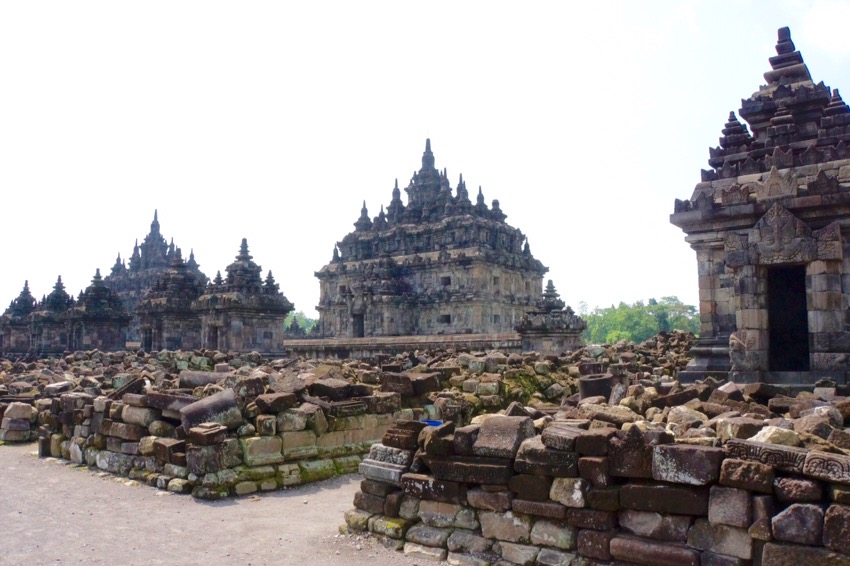 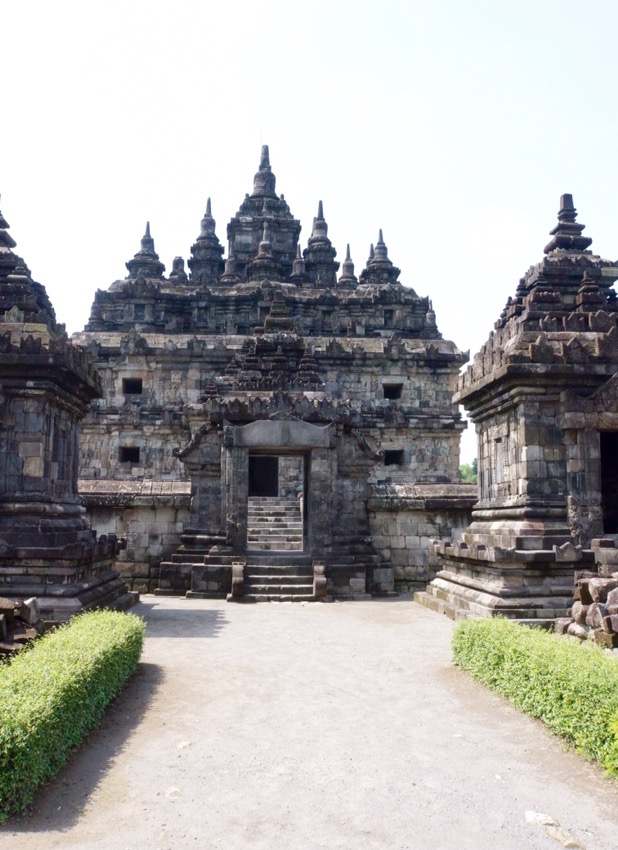 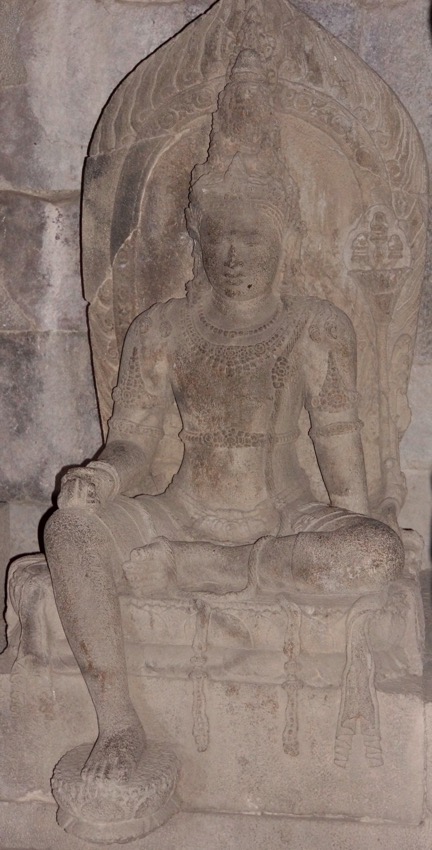
then move on to an interesting Hindu temple discovered underground at Sambisari 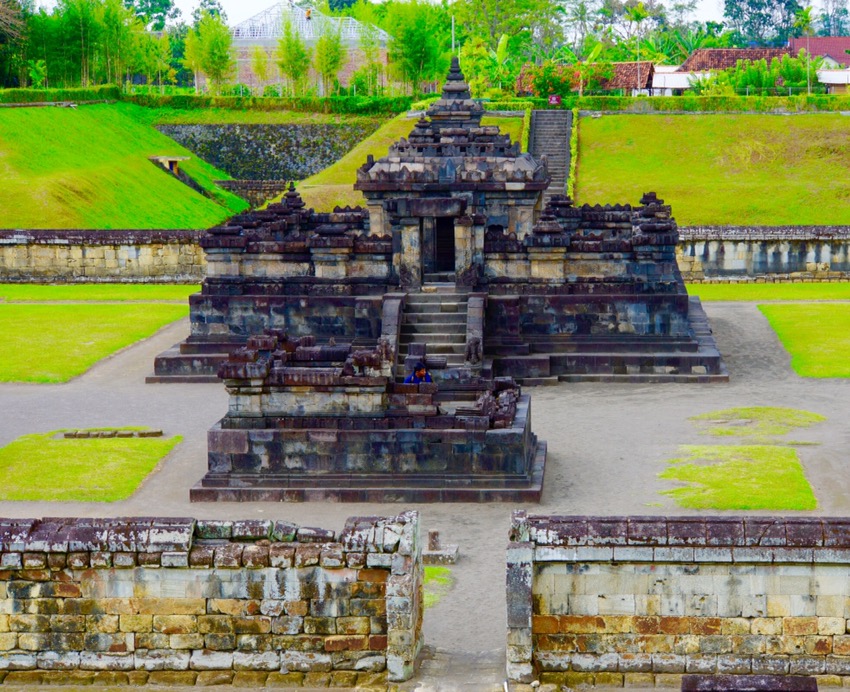
Carol and Valerie walk through flagged streets to get to the site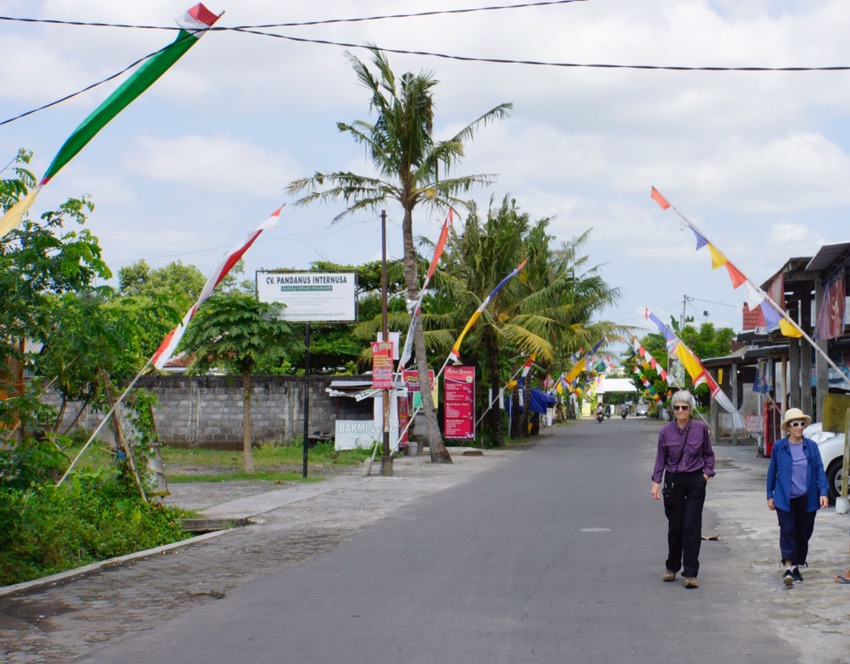 We see some young nuns engrossed in their cell phones We see some young nuns engrossed in their cell phones 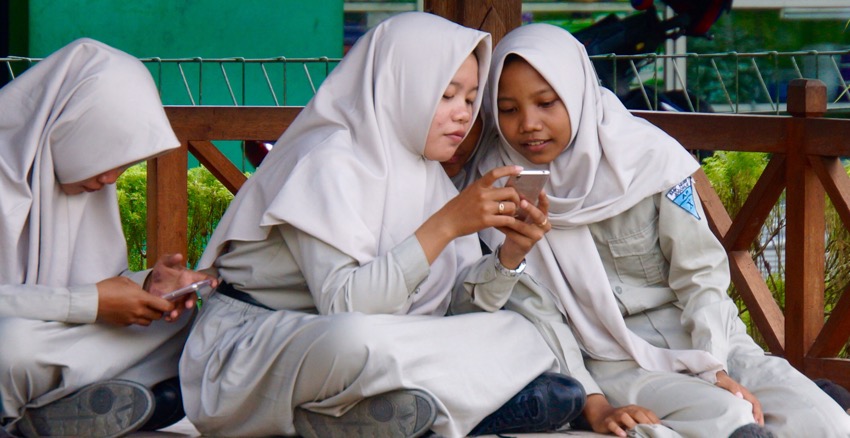 Eka shows us a map to help us to situate where we’ve been. Eka shows us a map to help us to situate where we’ve been.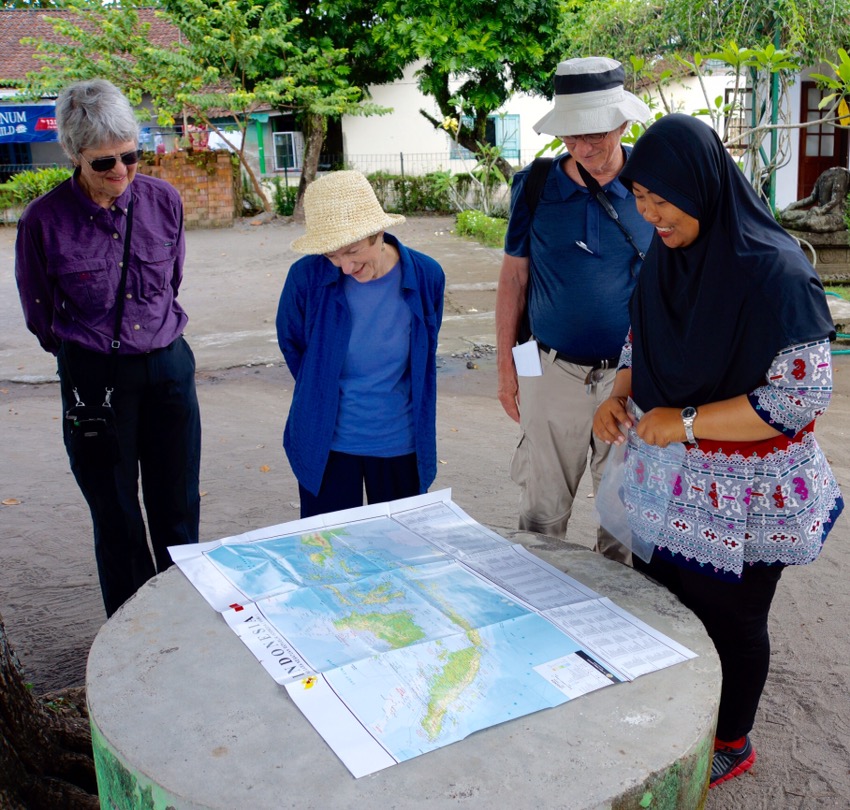 After lunch, we drive on to the Jogy airport for our flight to Jakarta. After lunch, we drive on to the Jogy airport for our flight to Jakarta.
Arriving in Jakarta, our guide takes us to our nearby hotel, the Sheraton Bandara, a very nice modern (but unexceptional) place. We decline his suggestion that we ride some 35 minutes in to see Old Jakarta. It’s hot, and we’ve about had it. We have drinks with the Lewises in the hotel bar, go up to our room briefly and then meet for dinner.
We’ve left a 3:20 wake up-call, have breakfast scheduled in the room for 3:30 and will be driven to the airport at 4:00. Long haul tomorrow will provide some time for reflection.
June 2. Carol and I have breakfast outside on our patio, overlooking rice fields and with Borobrodur as a backdrop. Not an easy life, but we are learning to cope.
This morning we are scheduled to do a bicycle tour through beautiful rural countryside and villages. Carol and Valerie decide to do the mountain bikes, but Mike and I opt to do the same tour via horse-drawn carriage. This makes it easier for us to photograph (and avoids the bikes, which seems to me to be tempting fate, as I have not ridden for some twenty years, when we took a bike trip to New Zealand).
The trip was terrific, interesting scenery (rice, tobacco, chilies, and spinach) and villages. Very friendly people, and some cute kids. We stopped to see noodle making, tofu making and pottery. Only downside was that towards the very end, Valerie fell off of her bike. She does not appear to be hurt seriously, though. 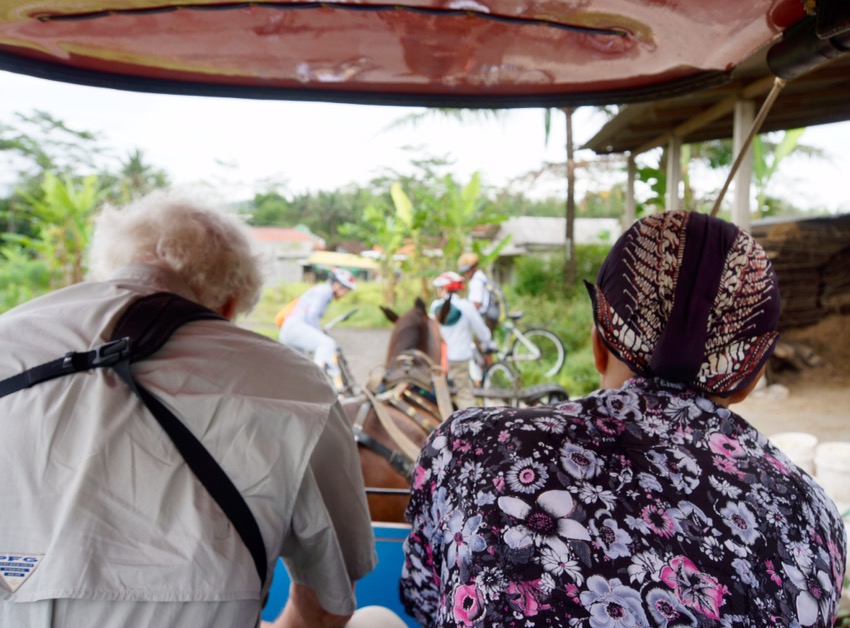
 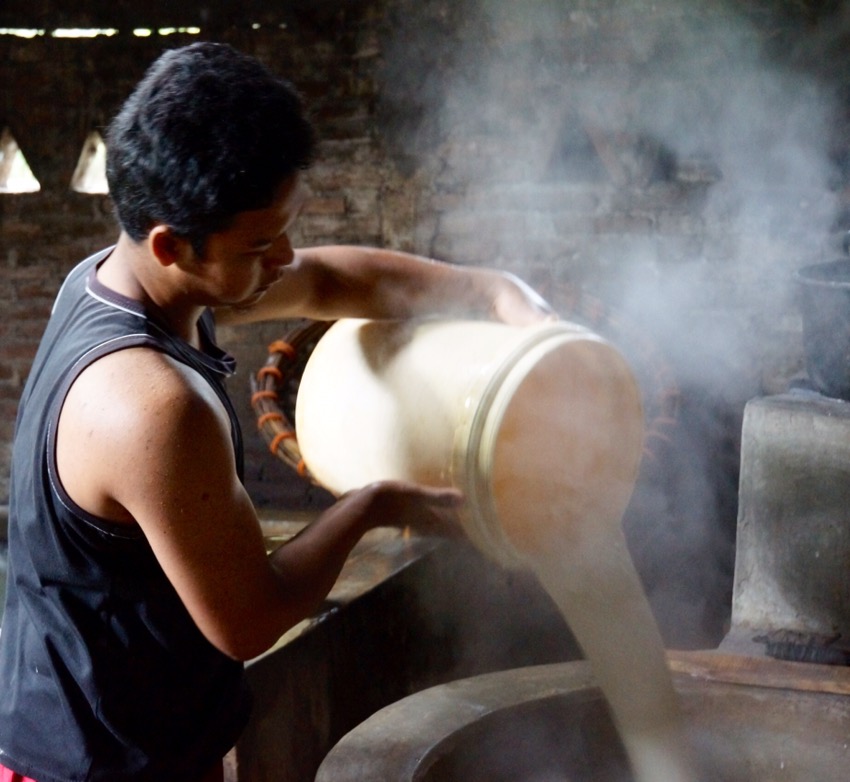 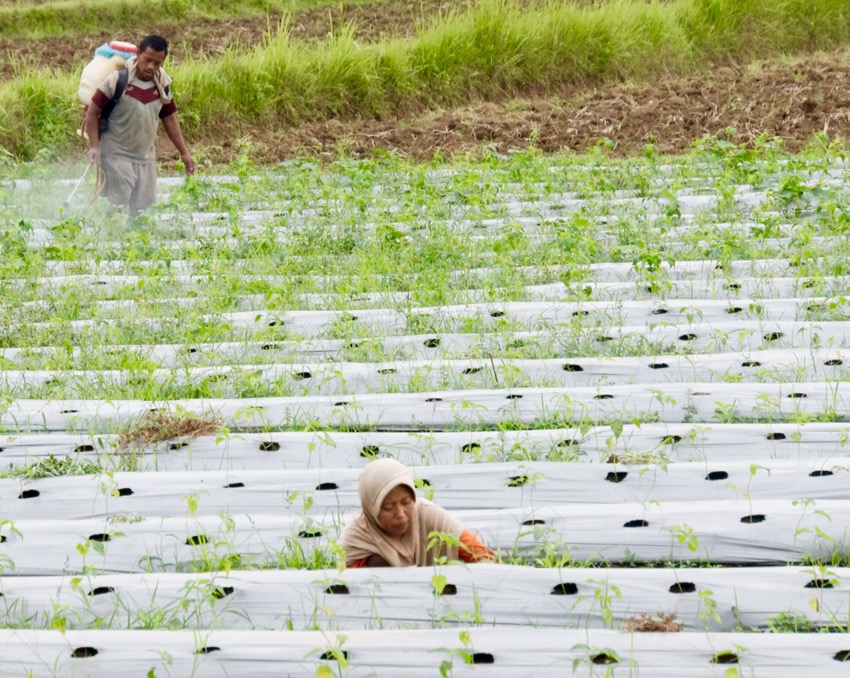 
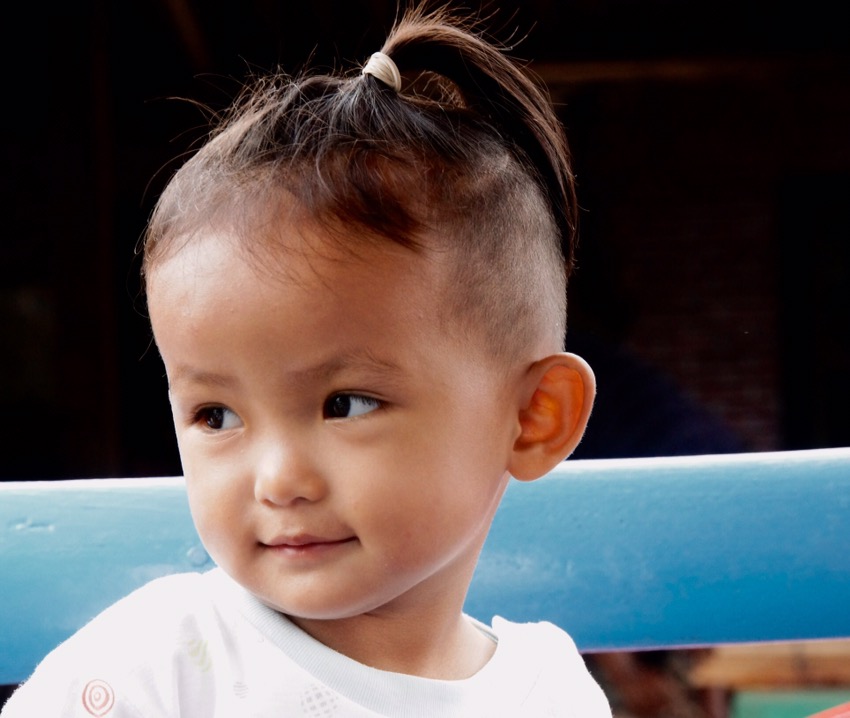 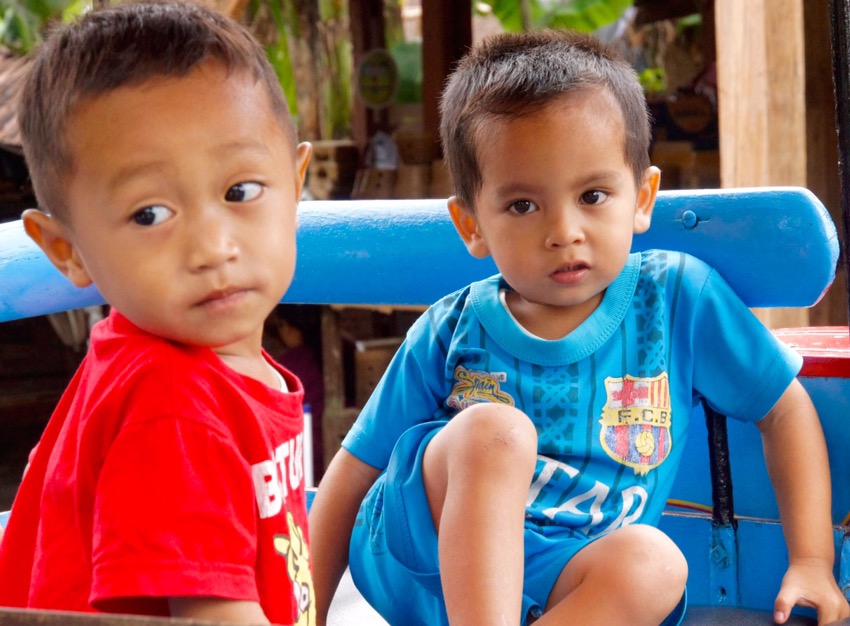  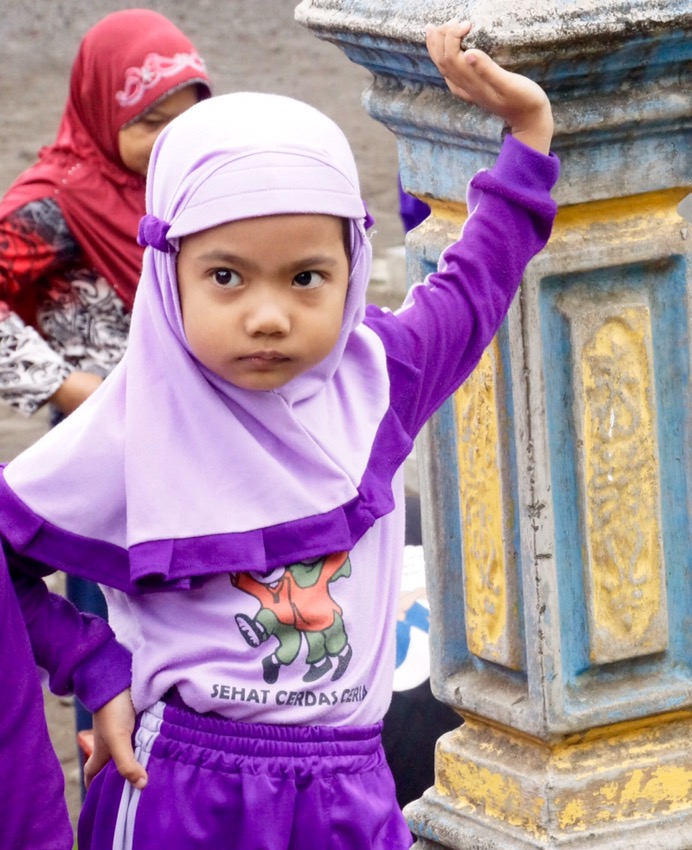 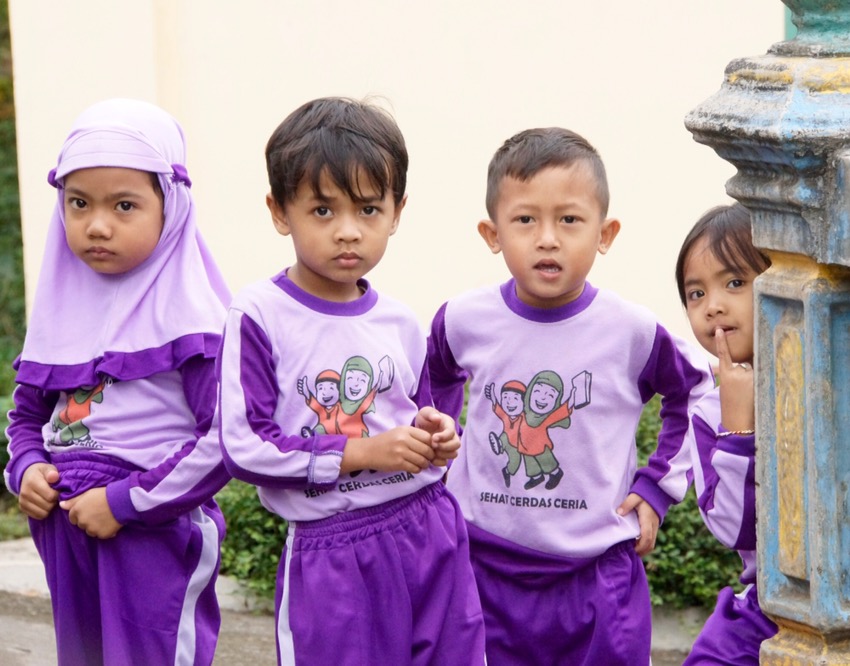
 
Eka takes Carol and me to see the Mendut Monastery that Michael and I visited to meditate last night. We also see the interesting Mendut Temple right beside it, which is older than Borobudur and features very unusual sculptures of Buddha sitting on a chair.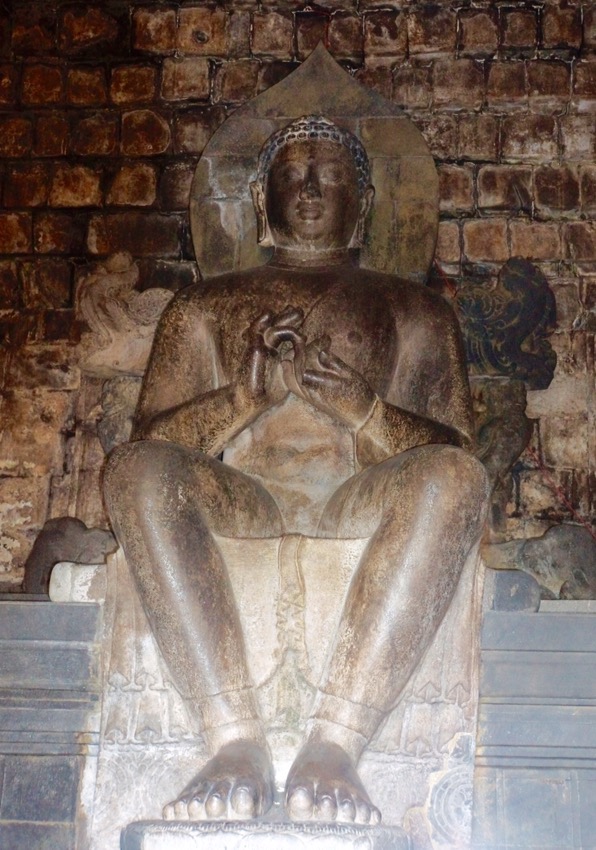
Carol and I go with Eka to the wonderful OHD Museum to see the collection of modern art amassed by Dr. Lei Hong Djien. The current exhibit celebrates 20 years since opening and features works acquired by Dr. Djien 25 years ago and, along side them, new works by each artist commissioned by Dr. Djien on the occasion of this 20th anniversary. Fascinating to see the evolution in the artists’ work. The visit is made more interesting because Dr. Djien happens to be near the museum and he comes over to greet and talk with us. He has been to Chicago several times and has a son who graduated from the University of Wisconsin medical school. Dr. Djien is a true patron, in the mode of wealthy families back in Renaissance times. His enthusiasm for the work is totally infectious, making this a most memorable event for us. I have written to Dr. Djien, thanking him and inviting him to visit us in Chicago.
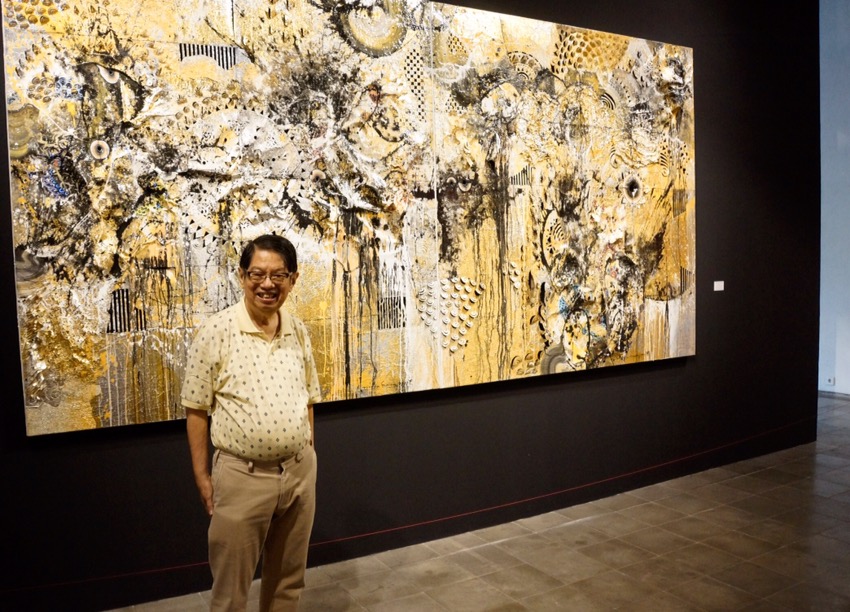 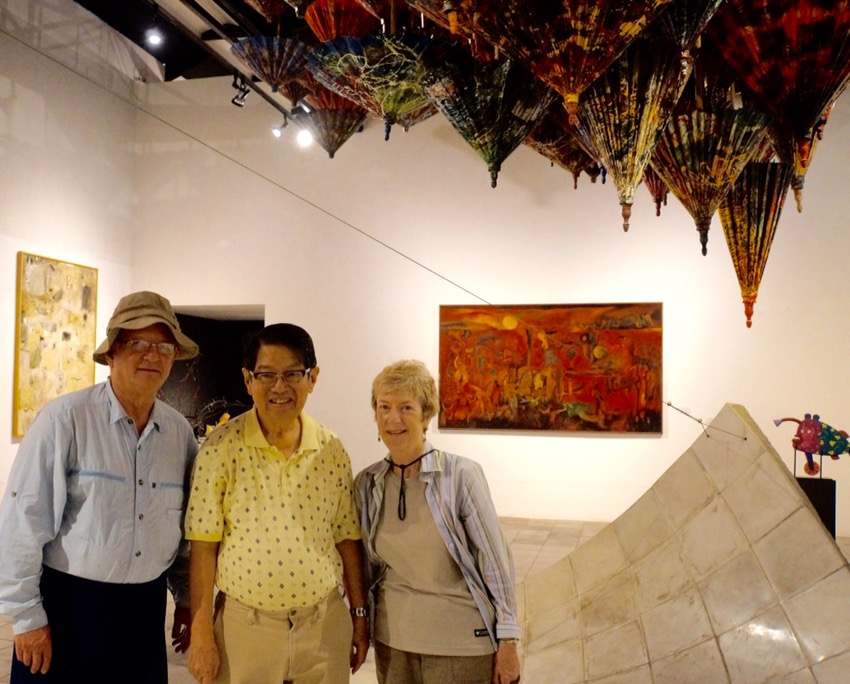 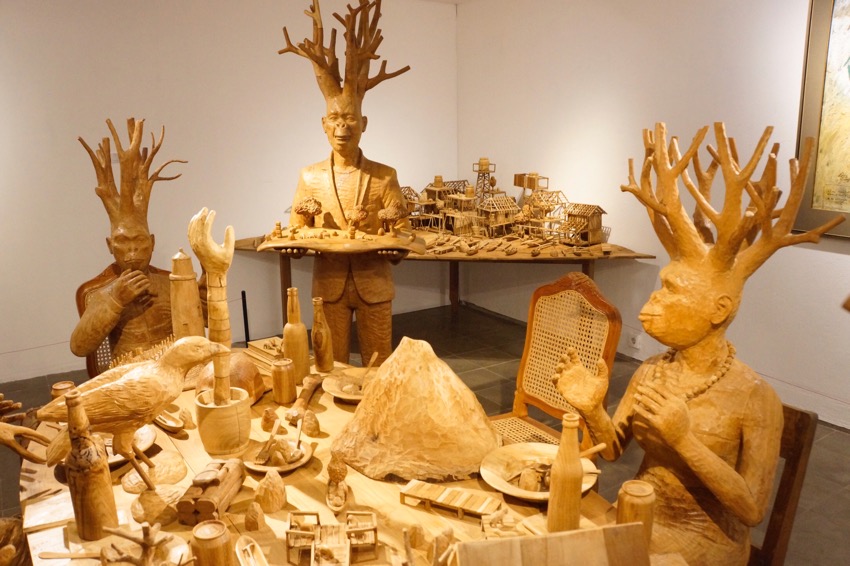 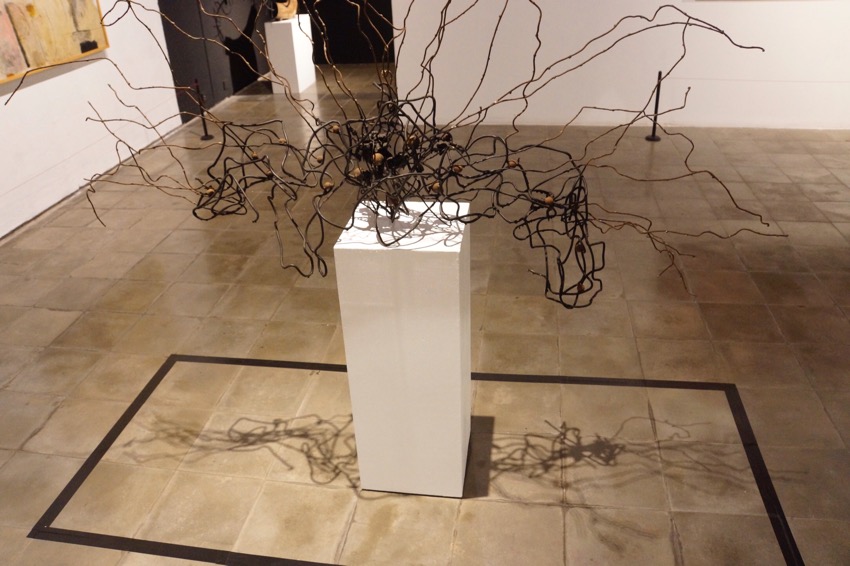 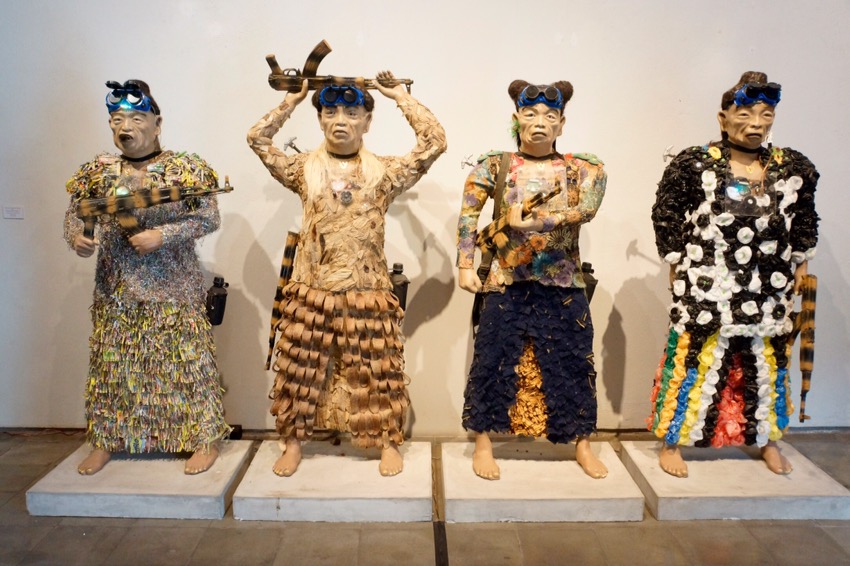
We return to the Amanjiwo for lunch with the Lewises and after a very short break, we spend the afternoon and sunset hours back at the Borobudur, which typically closes to the public at sunset. But due to the resort’s special connections they can arrange special permits providing us access post closing to the public. Being at this fabulous monument all by ourselves is absolutely magical, even though the cloudy weather blocks the sunset. It’s fun to watch everyone photograph themselves.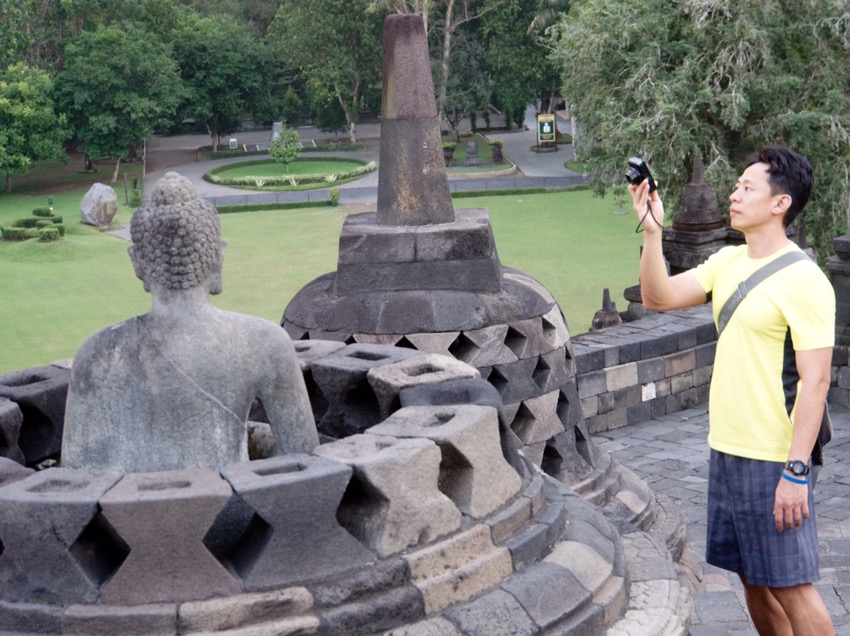 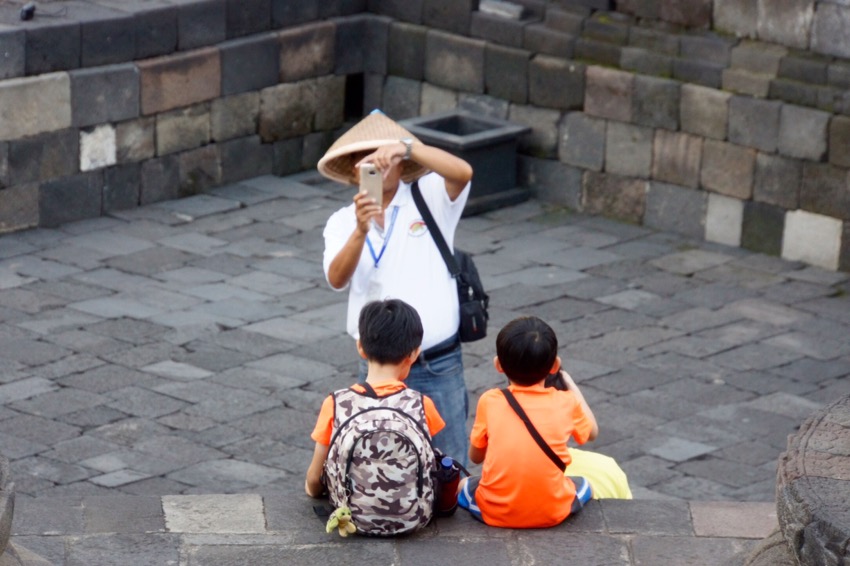 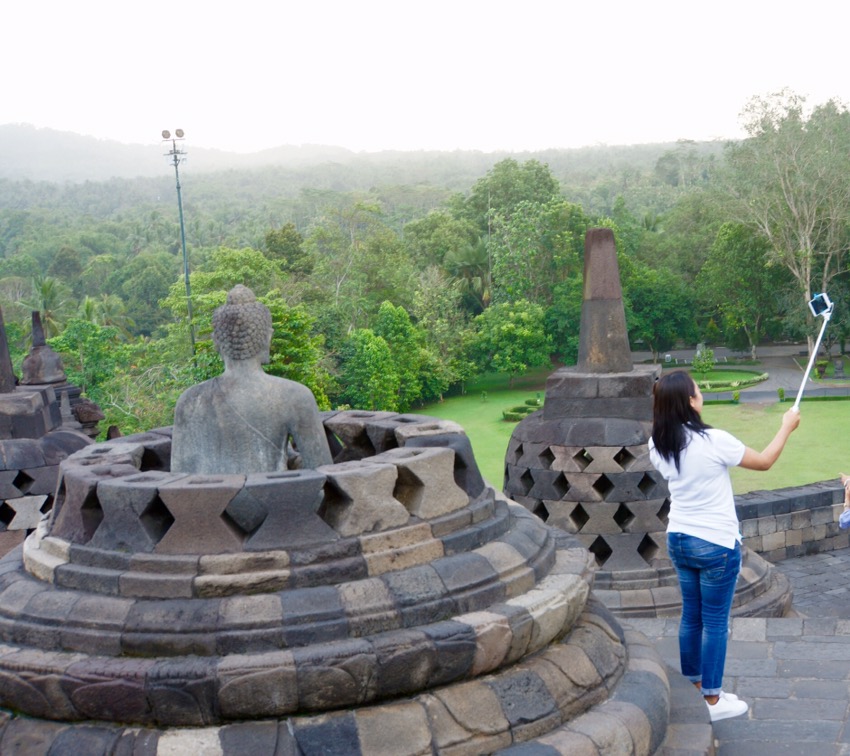 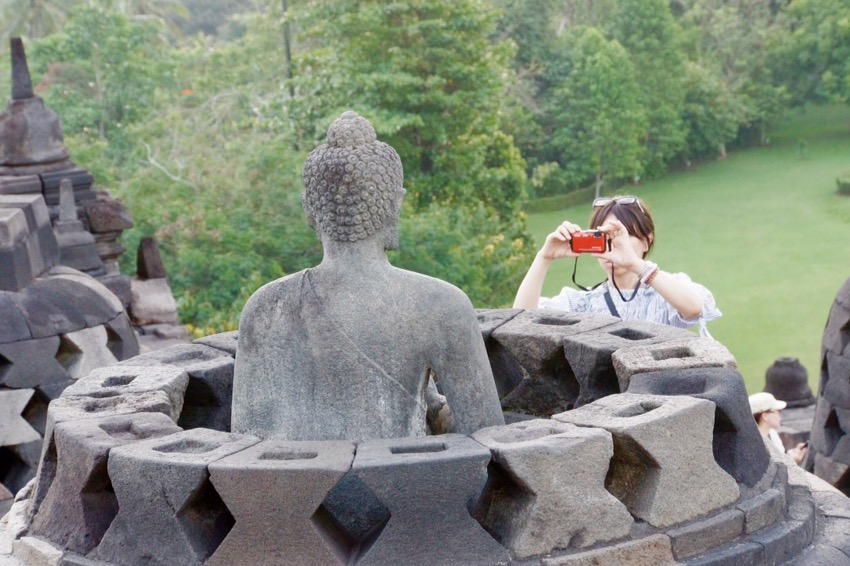 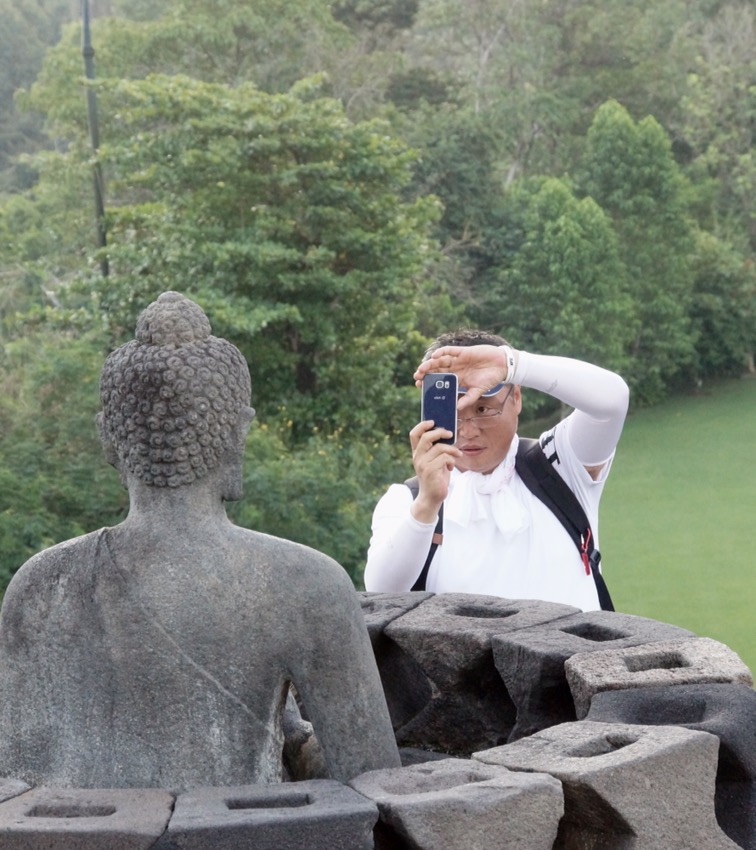 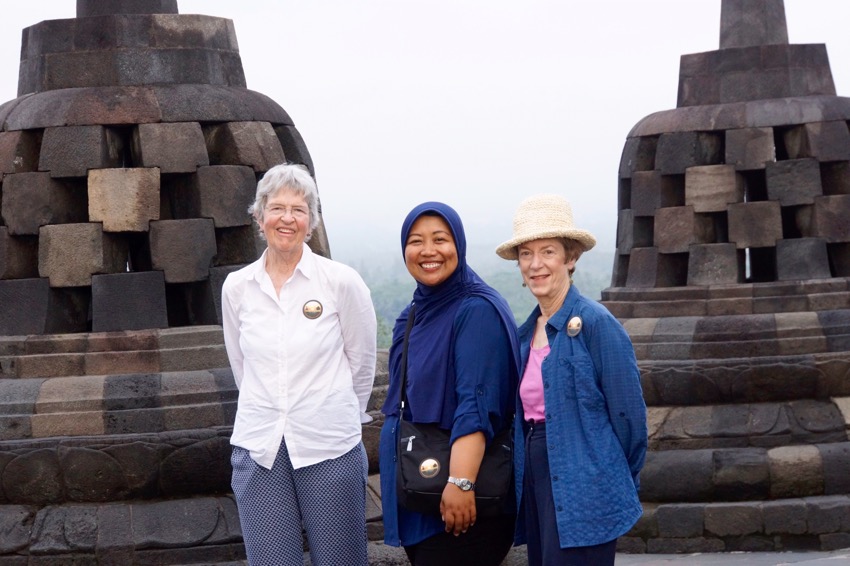 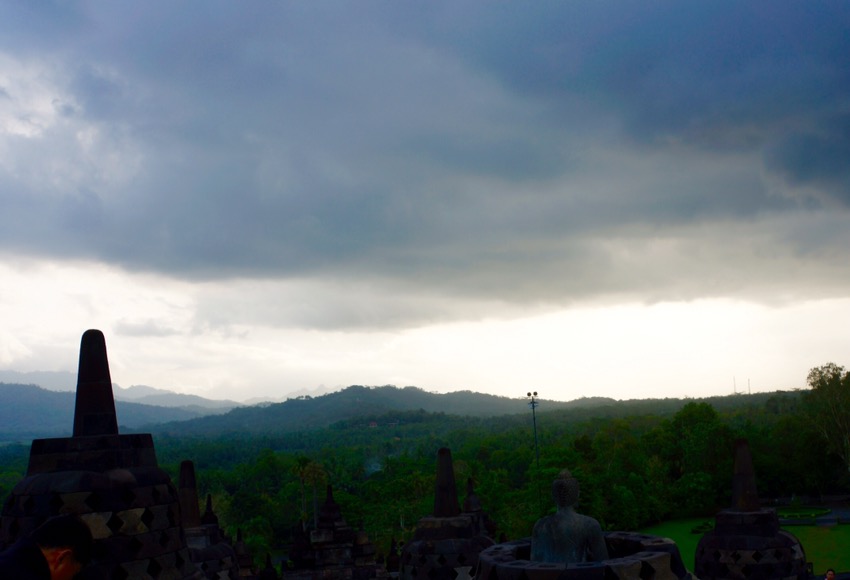 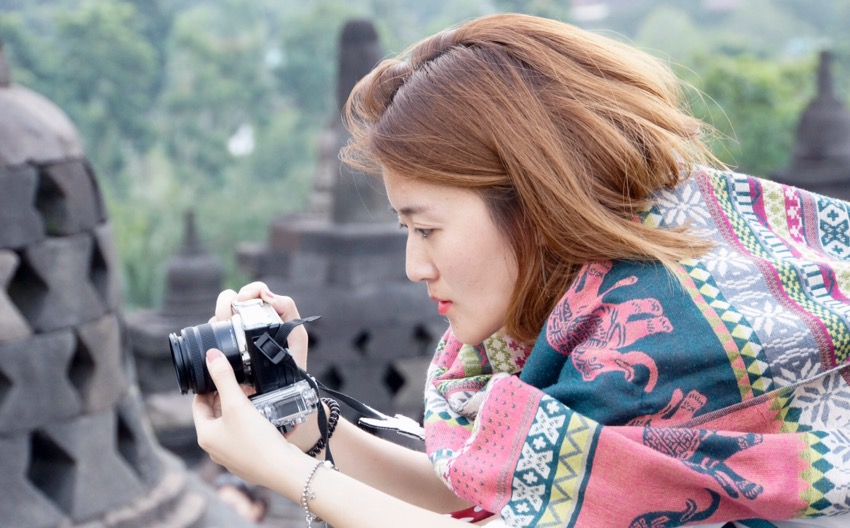
We return to the hotel for dinner and to see some short, Javanese dances performed to live music.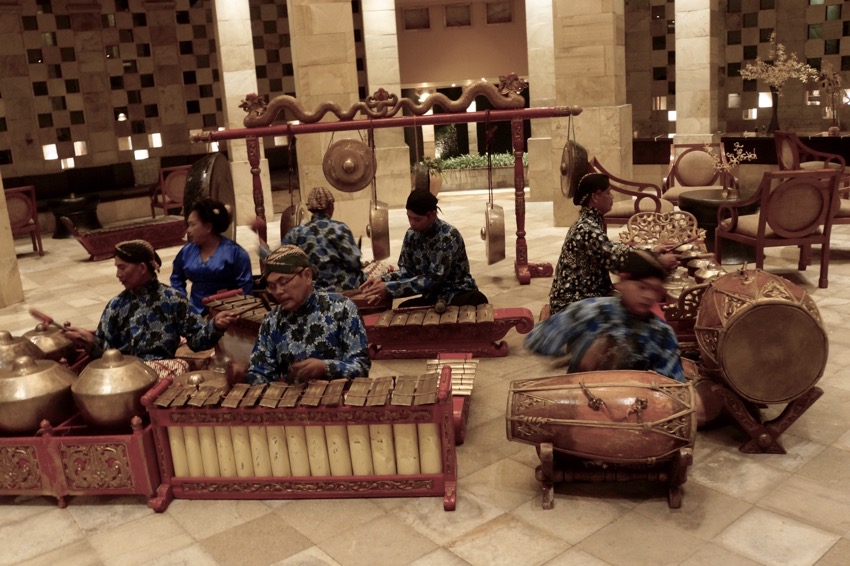 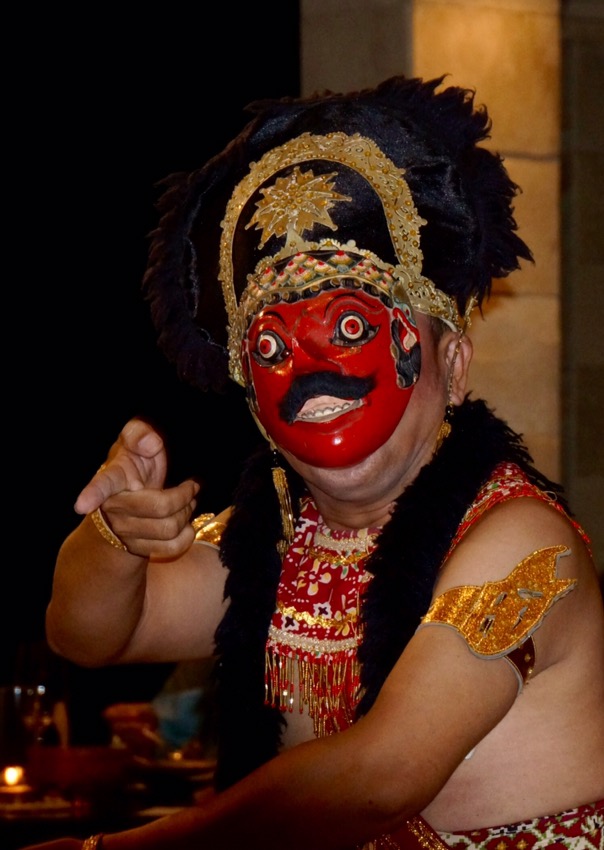 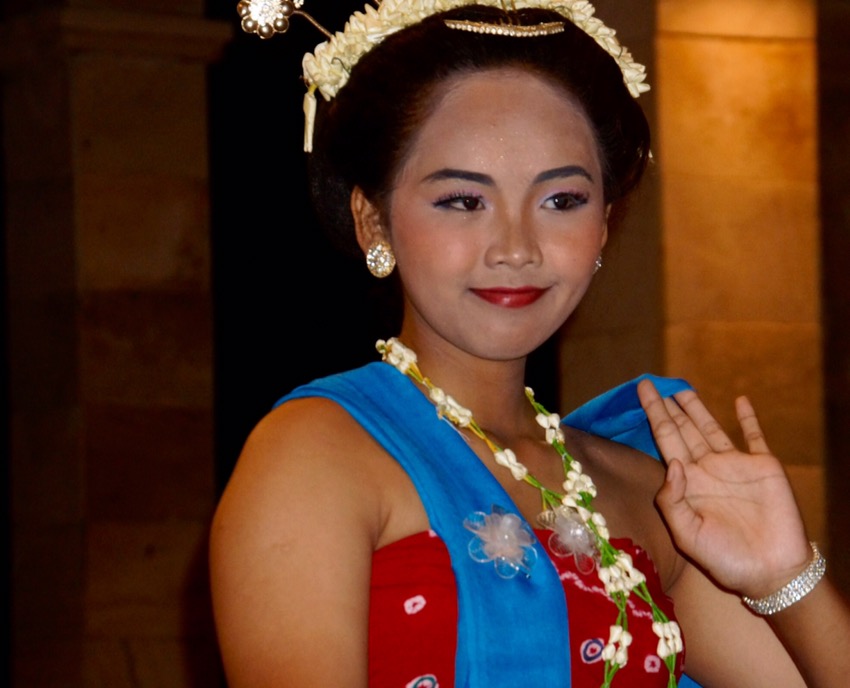 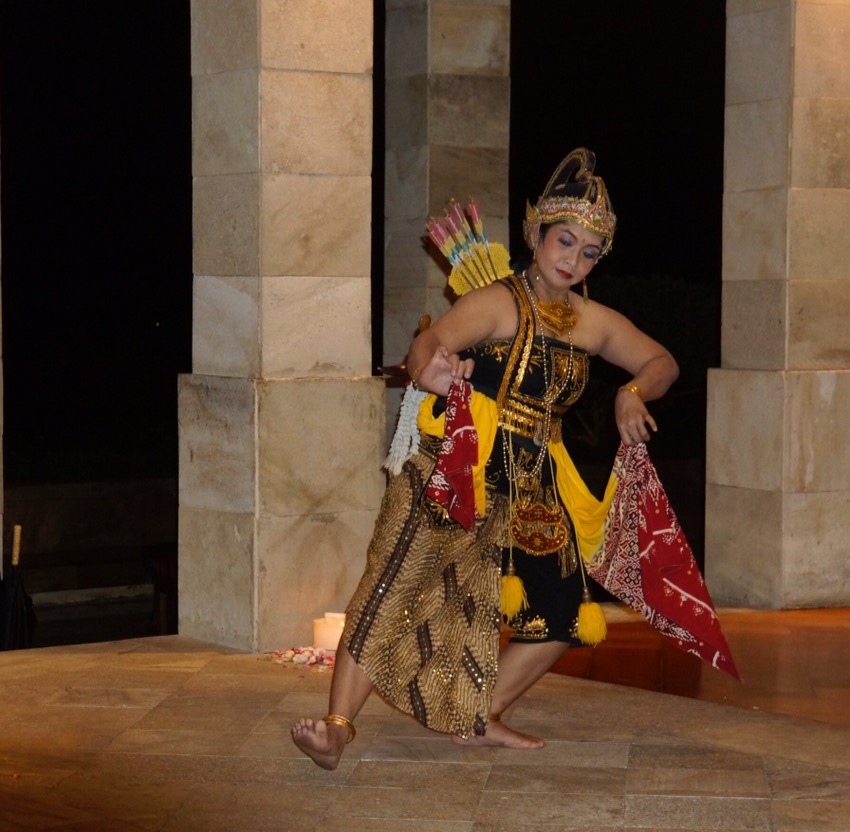 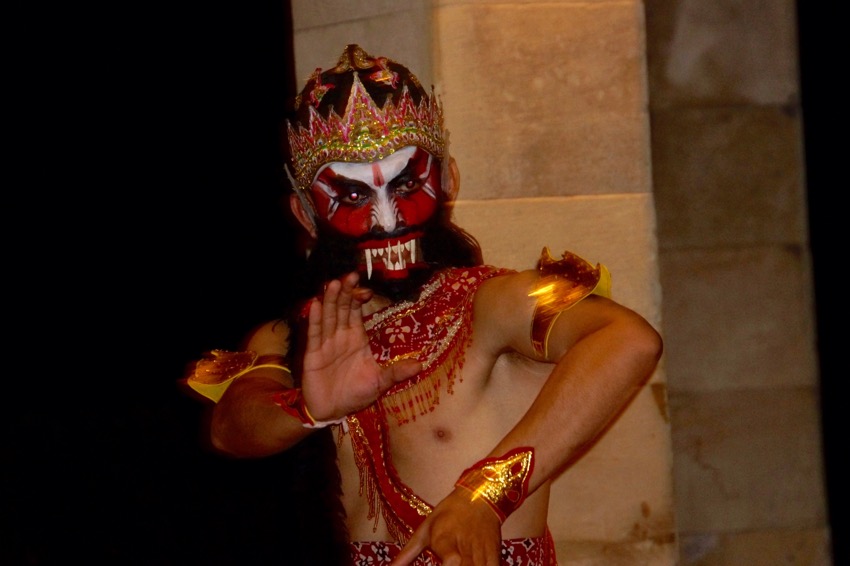
All in all, one of our best days, and that’s saying something.
June 1. At 4:30 this morning, we meet Eka and our driver, Kamto, and set off for sunrise at Borobudur, the world’s largest Buddhist monument and the largest human-made structure in the southern hemisphere. It predates Angkor Wat (in Cambodia, which Carol and I will visit next February) by 300 years and Notre Dame by 200 years. Rediscovered in 1815 by Sir Stanford Raffles, it has been excavated and returned to its original glory. The stone relief panels offer a clear glimpse into Buddhist doctrine and Javanese life 1,000 years ago. We spend the early morning hours exploring this fabulous complex with Eka. The climb to the top of the temple, nine stories high, while not a walk in the park, is not as challenging as each of the four of us had feared.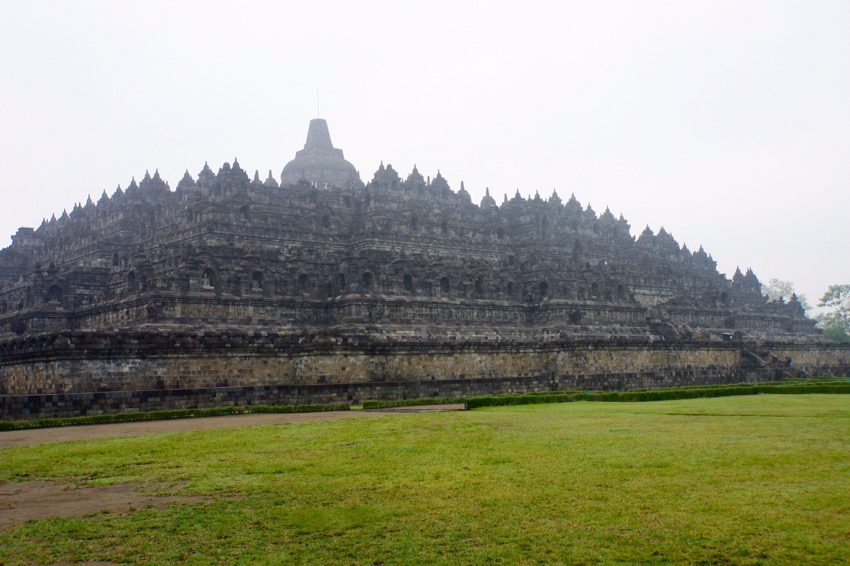 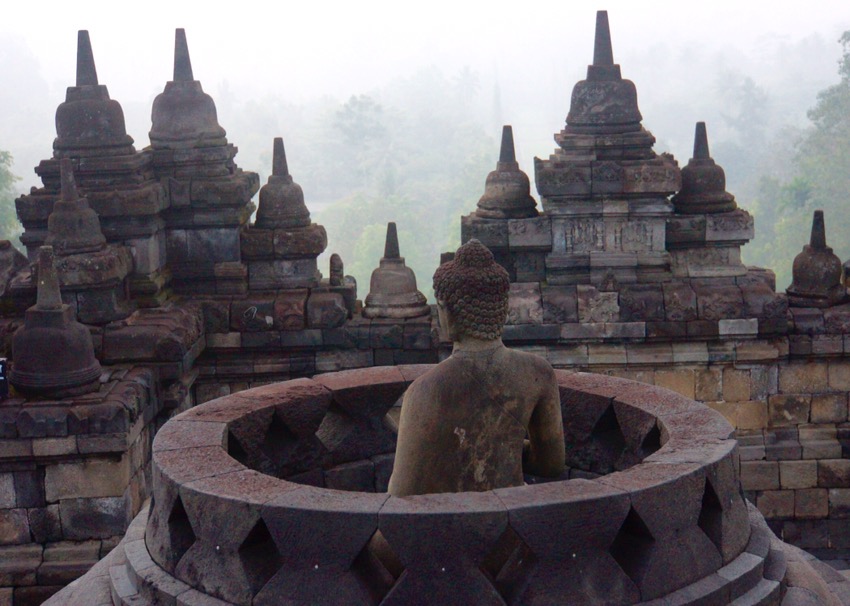 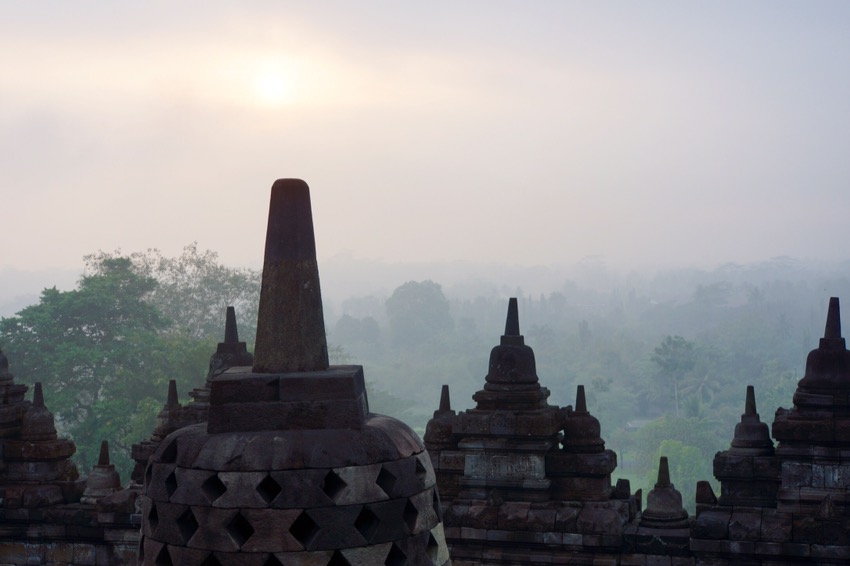 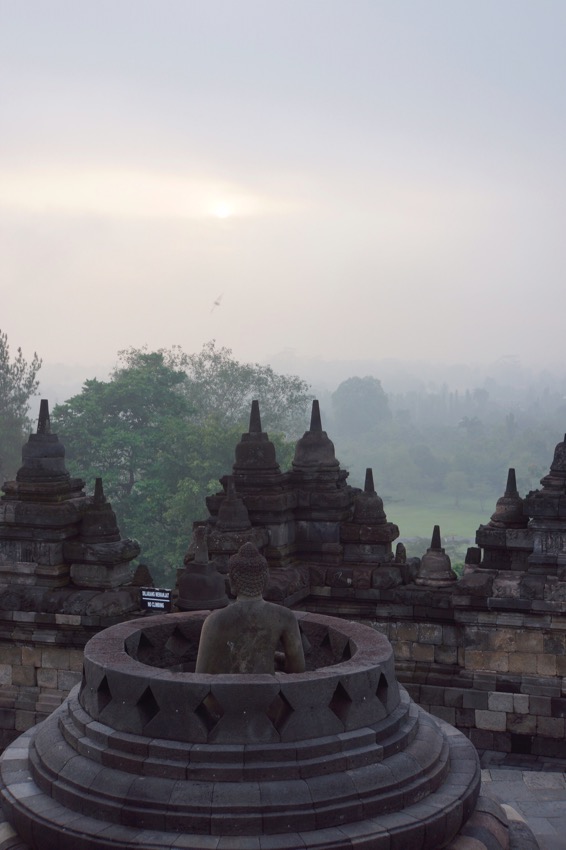 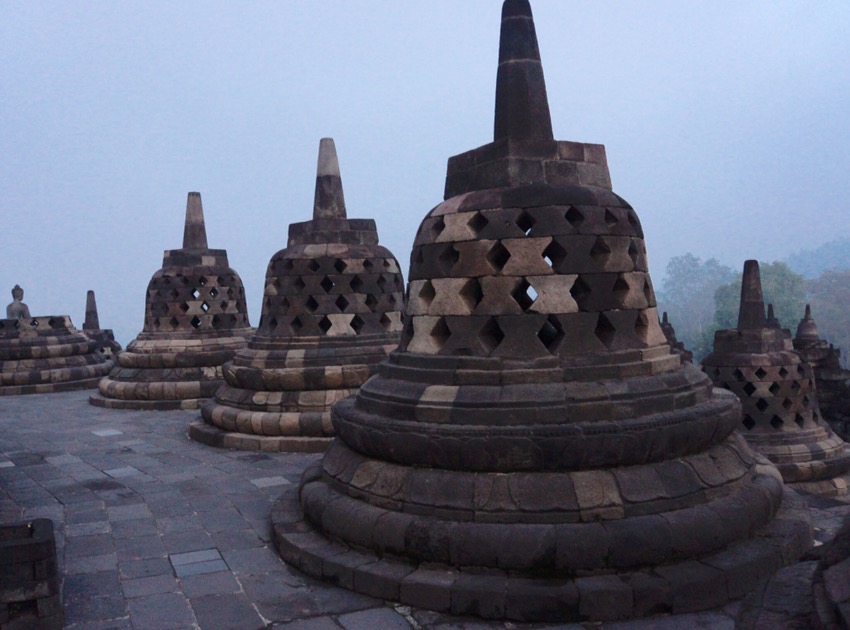  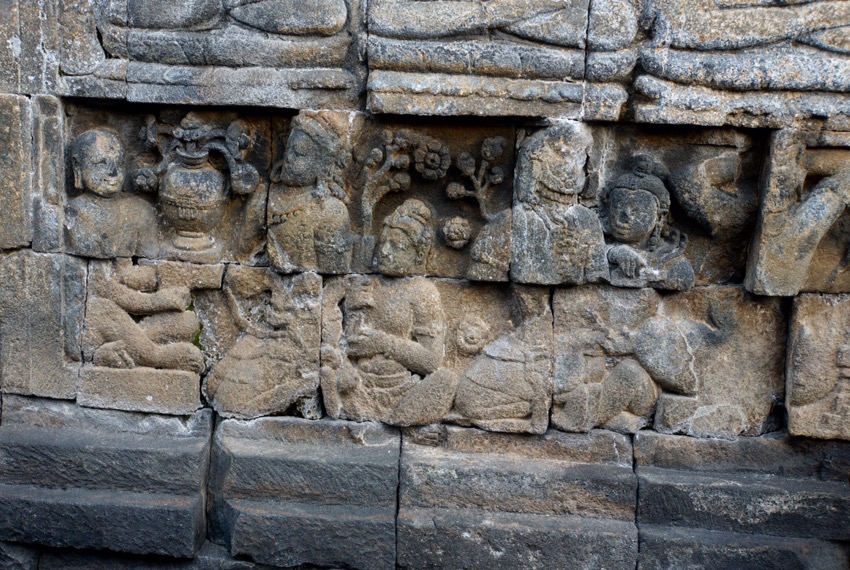  The people watching up on the monument (including Eka) was excellent The people watching up on the monument (including Eka) was excellent
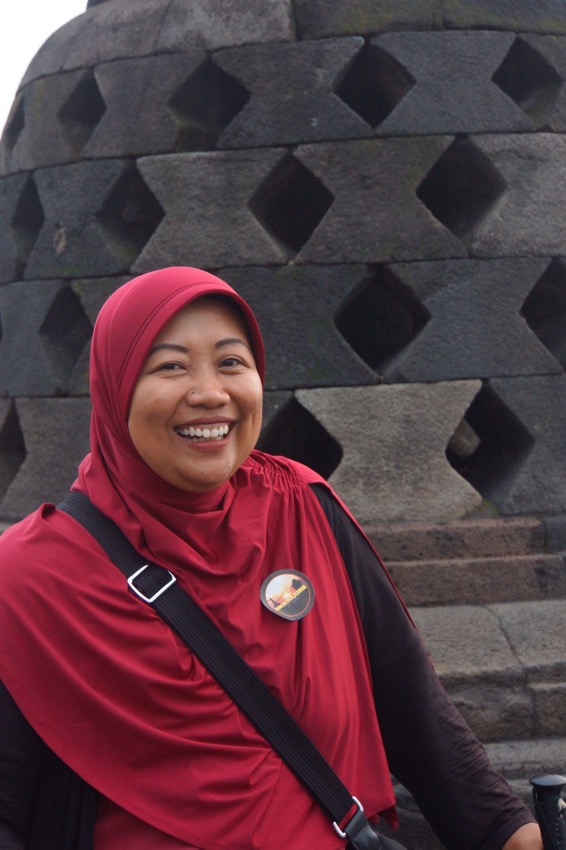 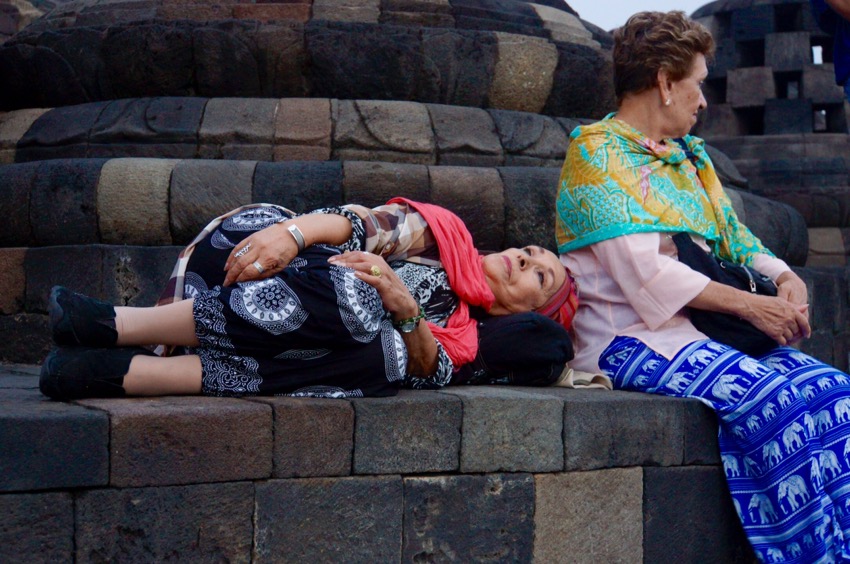 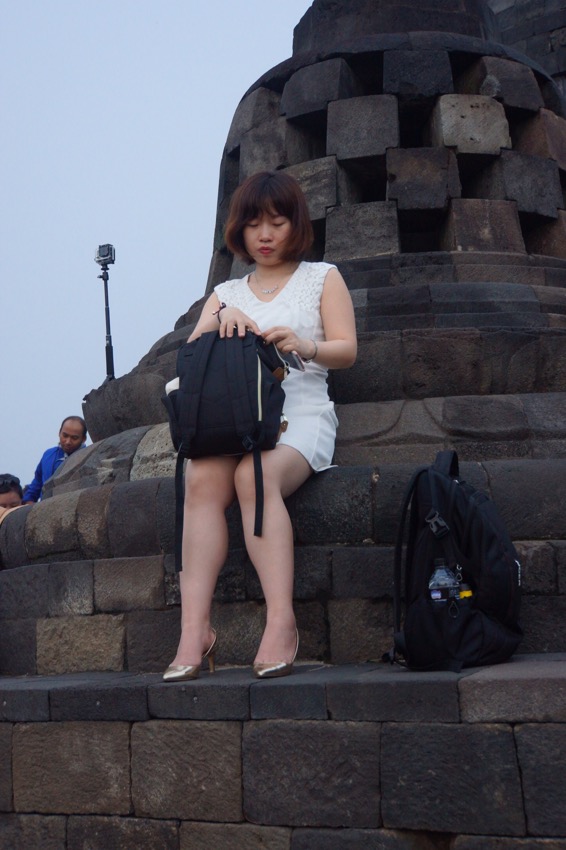 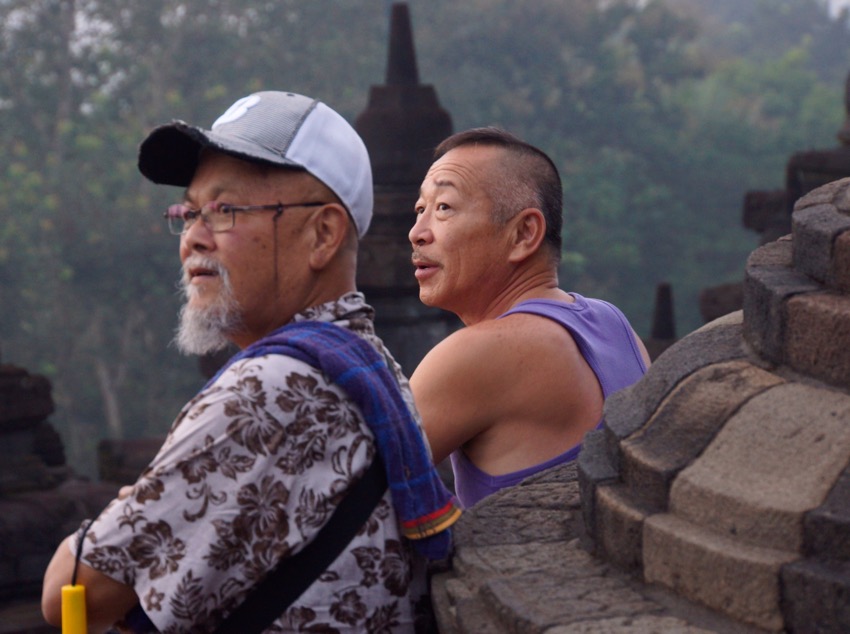 After exploring the temple, we have a wonderful a picnic breakfast at Dagi Hill, overlooking Borobudur. After exploring the temple, we have a wonderful a picnic breakfast at Dagi Hill, overlooking Borobudur.
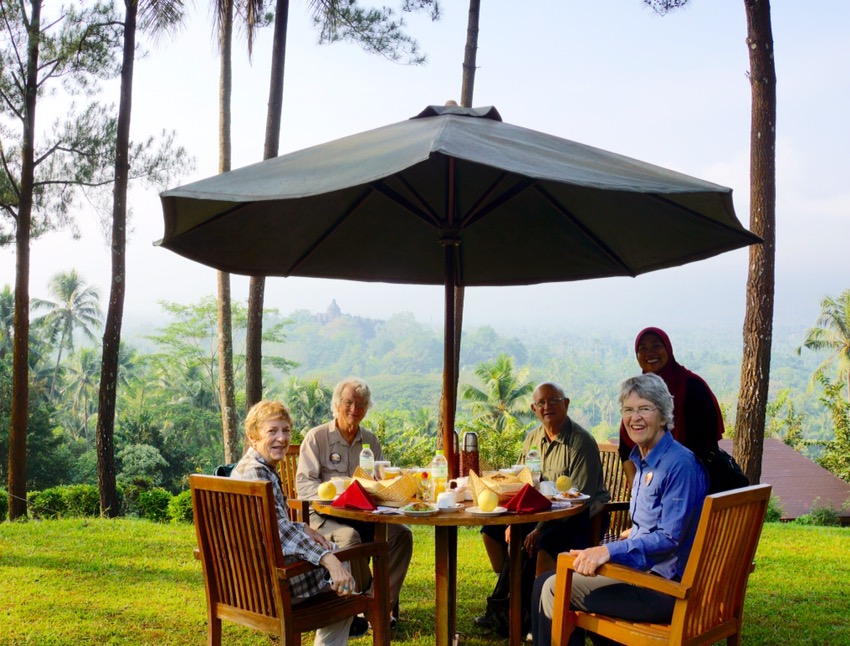  We return to our resort to rest up and have lunch (in our new hats, given to us by Amanjiwo). We return to our resort to rest up and have lunch (in our new hats, given to us by Amanjiwo).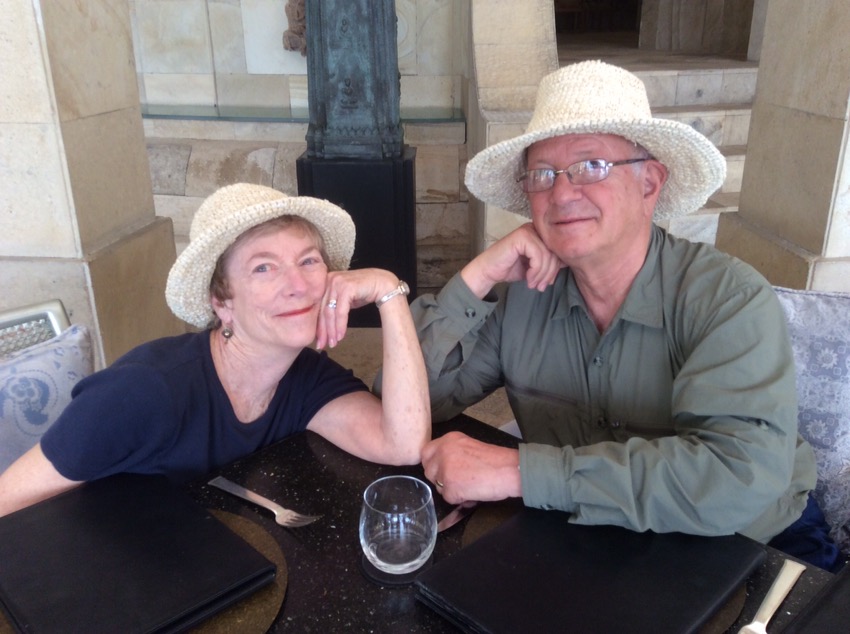 After lunch, we went back to our rooms to relax. Later, Michael played tennis, Valerie and I swam and Carol read. After lunch, we went back to our rooms to relax. Later, Michael played tennis, Valerie and I swam and Carol read.
Around 7PM, Michael and I were driven to Mendut Monastery, where we had a great session, meditating for an hour with some monks, and listening to them chant. After, we chatted briefly with two of the monks.
 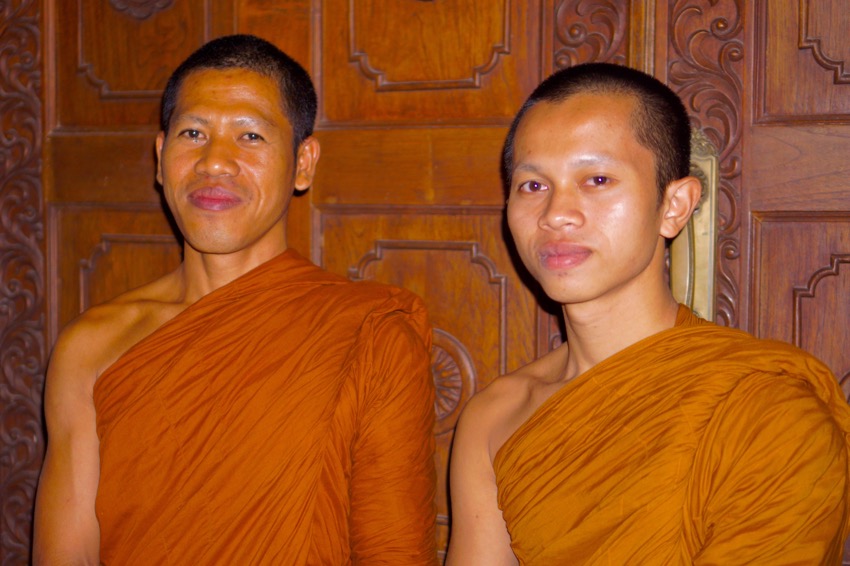 Carol and Valerie met for a drink, and we all reconvened for a terrific dinner at the Amanjiwo. Carol and Valerie met for a drink, and we all reconvened for a terrific dinner at the Amanjiwo.
|
|






































































